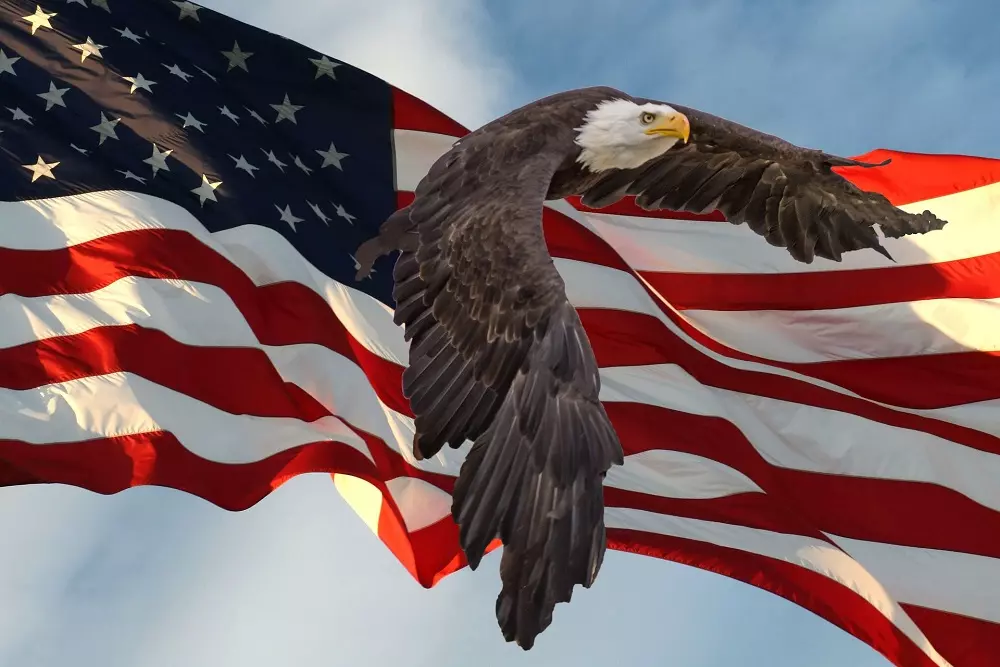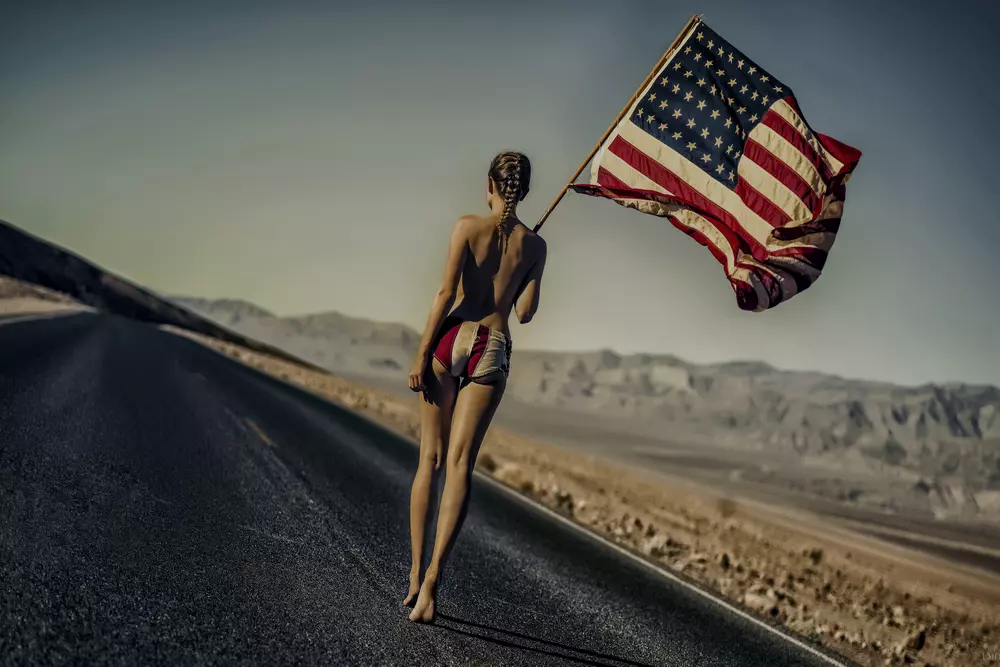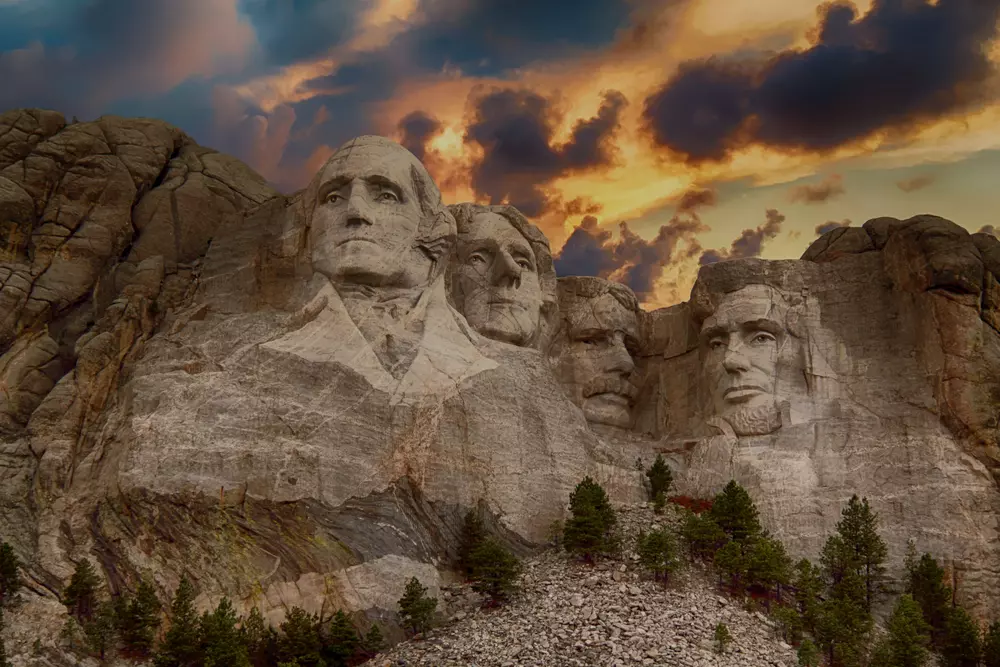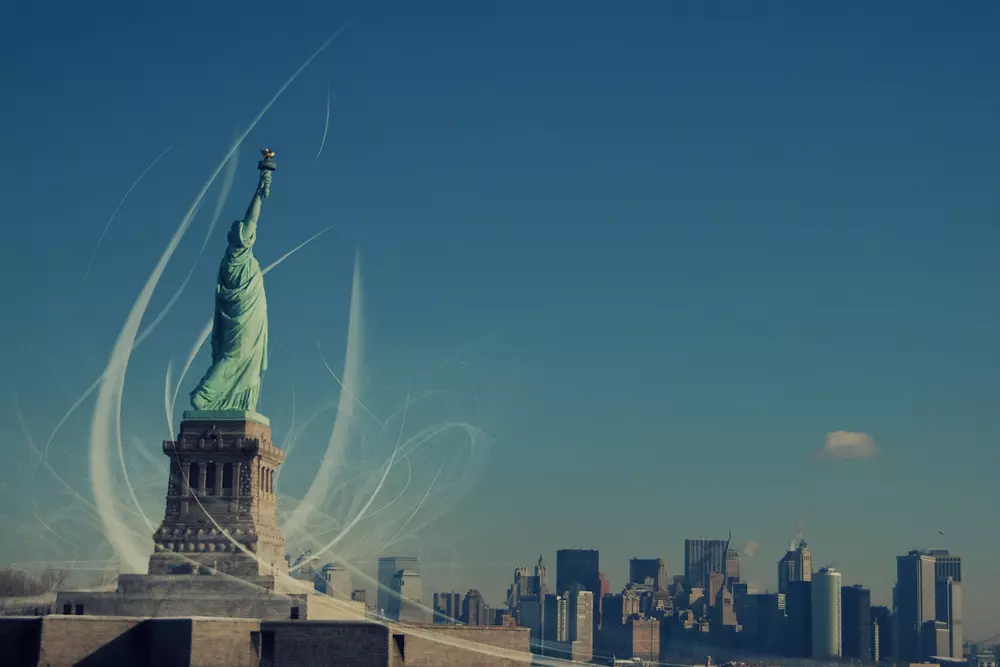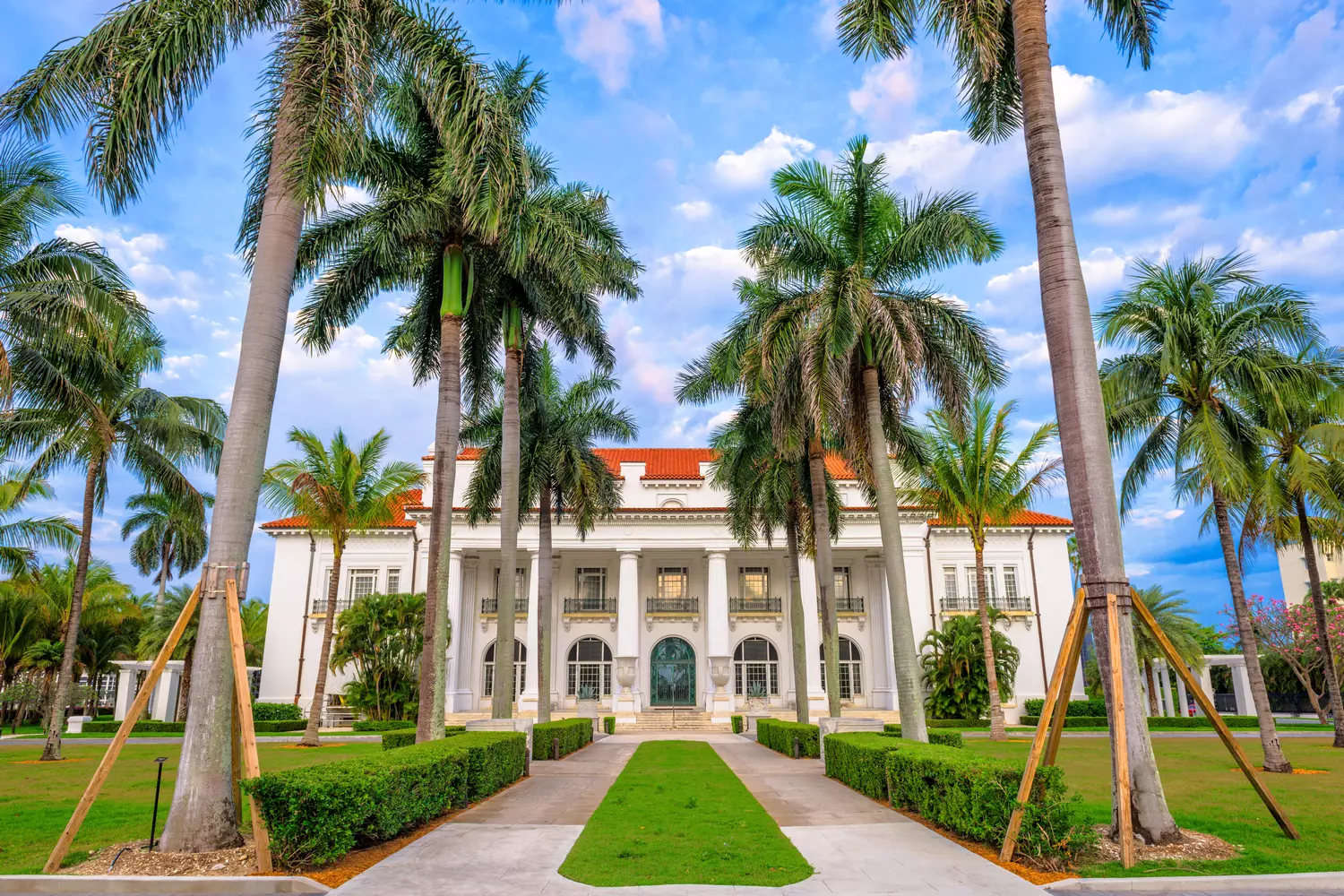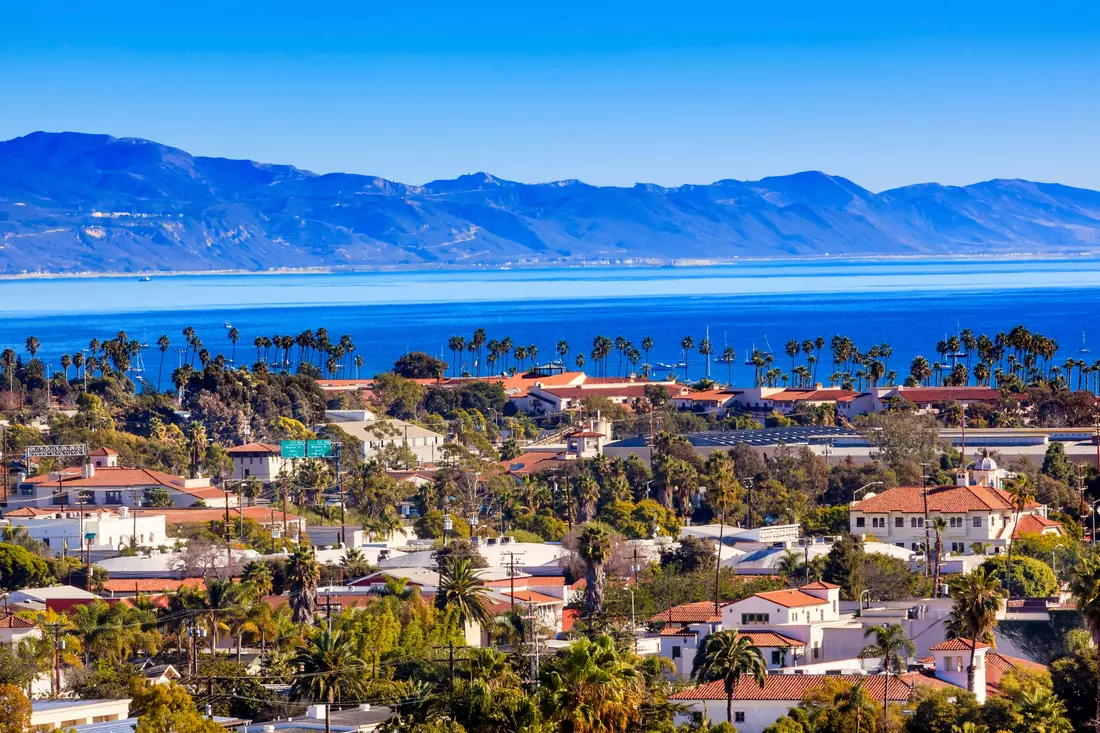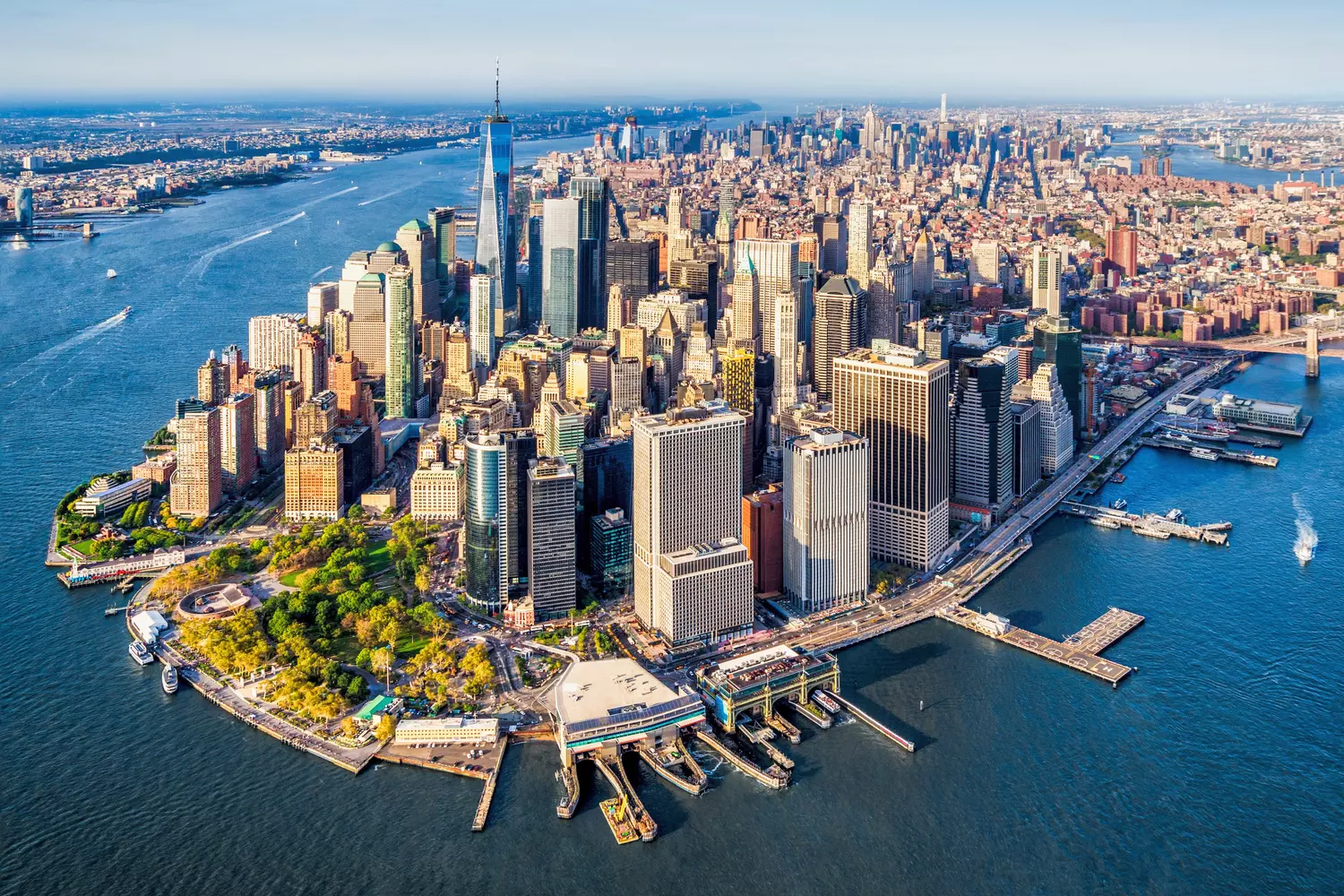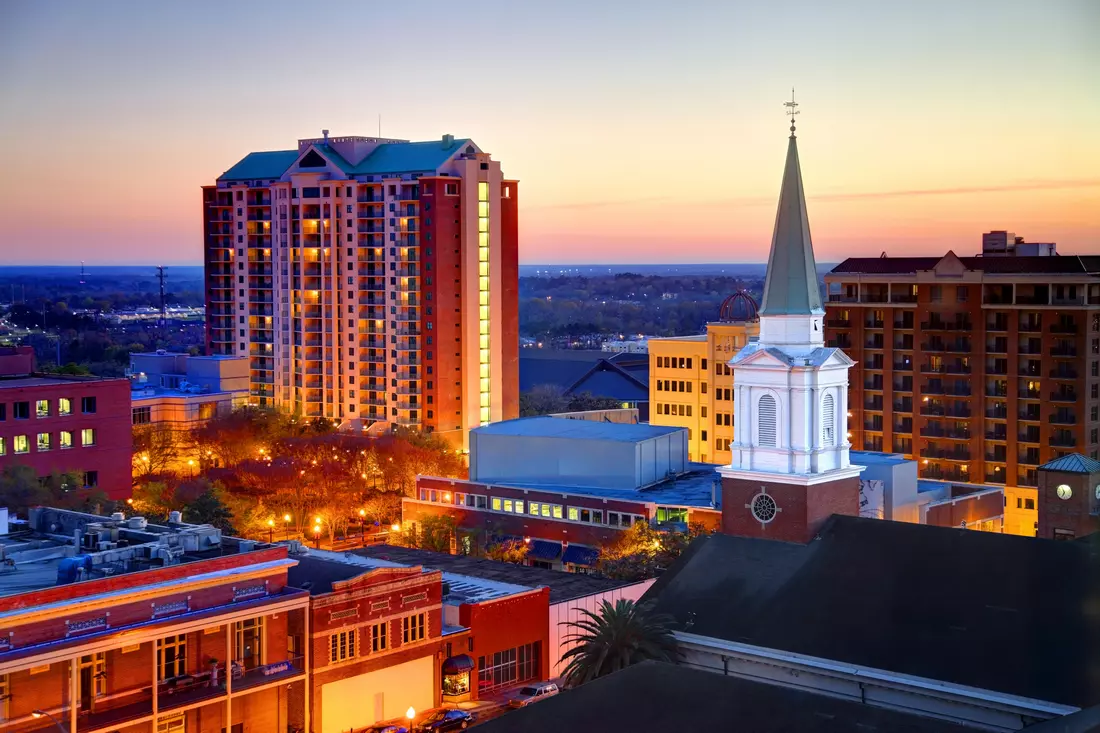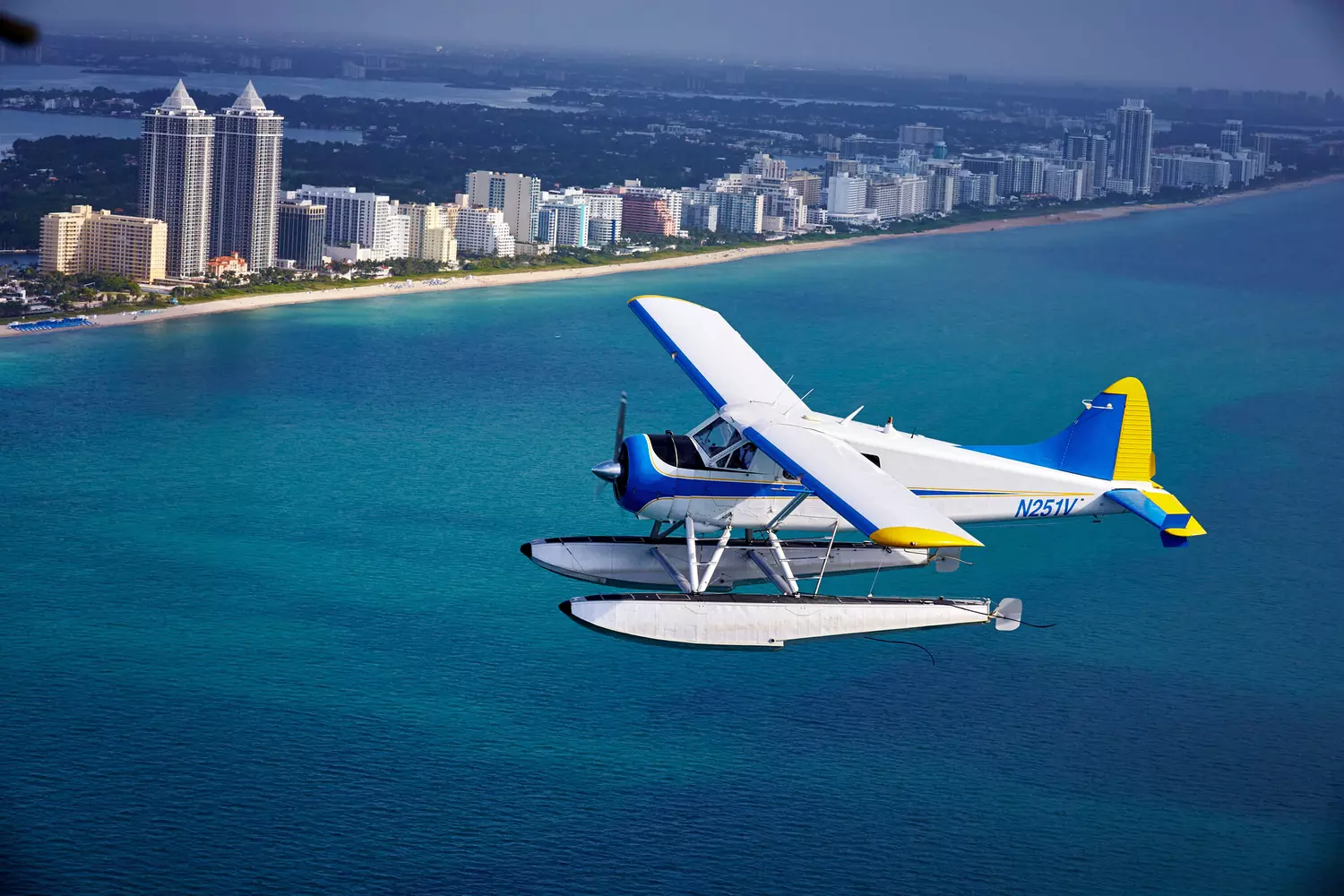There is a place on the map of America where the Earth itself reminds you of its power. There, geysers erupt into the sky, the ground breathes warmth, and eagles soar overhead. Yellowstone is not just a national park. It is the living heart of nature, the world’s first natural reserve, and to this day — one of the most mysterious and beautiful corners of the USA.
It spans three states, covers an area the size of a small European country, and offers something unique to everyone. Some come here for the perfect Instagram shots, others — to once again feel what solitude in the embrace of eternity truly means. Here, no one shouts; here, you listen — to the hiss of steam, the crunch of thermal crust underfoot, the distant roar of a bison.
Yellowstone isn’t advertised on billboards. It doesn’t need embellishment. People who have been here once come back again — with children, friends, and those they truly want to astonish. Because Yellowstone is about what stays inside. It’s not a park with benches and ice cream. It’s a living encyclopedia of the Earth, written by fire, ice, and time.
And to truly feel it, you don’t just look. You live it. Walk its trails, breathe the sulfurous steam by a geyser, hear the evening howl of a wolf. And then, in your heart, there remains not just a memory. There remains a mark. Warm, deep, and very personal.
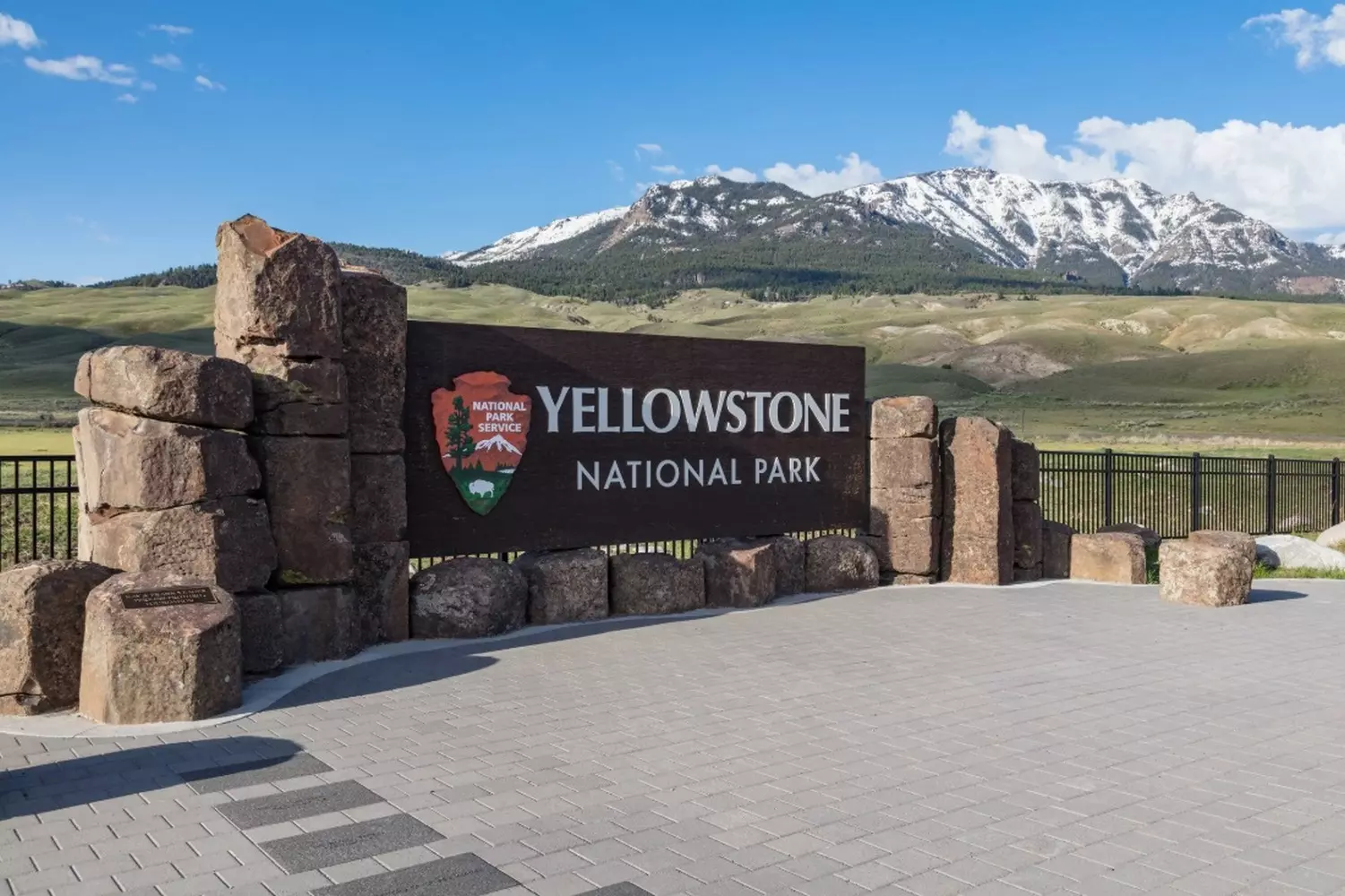
Interesting Fact: Beneath Yellowstone lies a supervolcano considered one of the most potentially dangerous on the planet. A major eruption could alter the Earth's climate on a global scale.
Yellowstone in Numbers and Facts: The Park That Was Ahead of Its Time
Yellowstone is not just a park with nature. It is an entire universe shaped by millions of years of volcanic activity, tectonic shifts, and glaciers. Here are some amazing facts to help you grasp the scale and uniqueness of this place.
- 01. Three states — one Yellowstone
The Yellowstone National Park is so vast that it spans across three states: Wyoming (the main part), Montana, and Idaho. The state borders inside the park are barely noticeable but highlight its geographic vastness. The total area is about 8,983 square kilometers, comparable to the size of Cyprus or Puerto Rico. - 02. The world’s first national park
When the U.S. Congress decided to create Yellowstone in 1872, the term "national park" was not yet in use. It was a revolutionary decision for that time: to preserve wilderness not for exploitation or settlement, but for future generations. Yellowstone became a model for other parks worldwide — from Canada to New Zealand. - 03. Earth’s natural laboratory
The park sits directly above a supervolcano whose caldera occupies nearly a third of its territory. This geological feature makes Yellowstone the most active hydrothermal region on the planet. It contains more than 10,000 thermal features:
- Geysers (including the famous Old Faithful, erupting every 90 minutes);
- Mud volcanoes;
- Fumaroles and steam vents;
- Colorful hot springs.
Each of these features is unique, alive, and can change over the years. Yellowstone’s landscape is not a frozen picture but the living breath of the planet.
- 04. Old Faithful — reliable as clockwork
The Old Faithful geyser earned its name for its predictability. It erupts approximately every 90 minutes, shooting a column of boiling water up to 55 meters high. It’s a true natural spectacle watched daily by hundreds of tourists. Statistically, it has erupted over a million times since its discovery.
Interesting fact: The temperature of the water erupting from Old Faithful exceeds 95 °C — boiling at this elevation (2200 m) occurs at a lower temperature than at sea level.
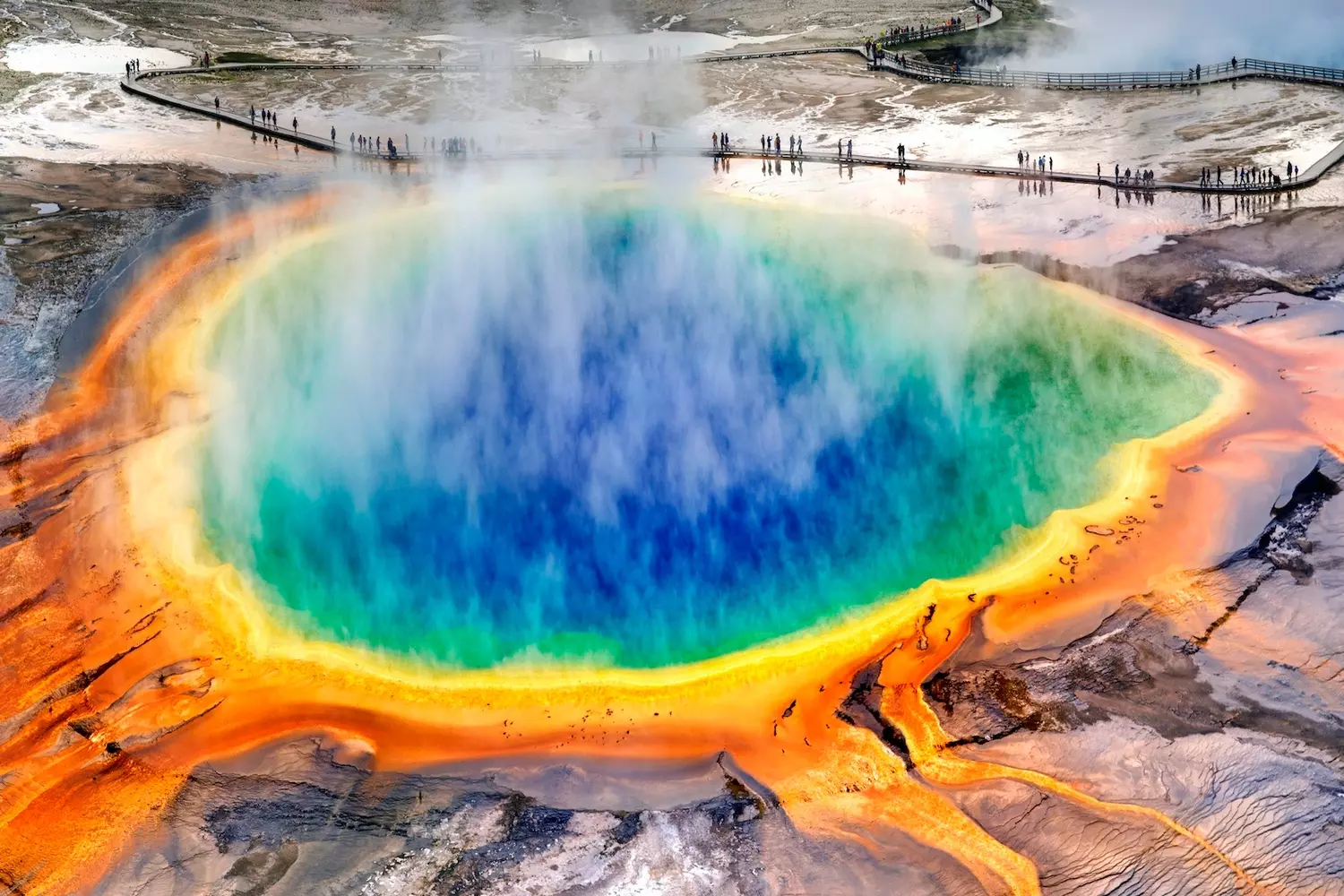
Why Yellowstone is a Must-See for Every Traveler
If you think you’ve seen nature just because you’ve walked alpine meadows or traveled around Iceland, Yellowstone can change that perception. Every kilometer of its trails is a new scene from a documentary film—only without a narrator. Here are five reasons why you should visit at least once in your life:
- 01. Geysers found nowhere else on Earth
Yellowstone is home to more than half of the world’s geysers. This is no exaggeration. Here you’ll find tiny bubbling springs as well as powerful fountains of boiling water shooting higher than trees. Among them are the legendary Old Faithful, the giant Steamboat Geyser (eruption height up to 90 meters!), and Grand Geyser, which can erupt continuously for up to 10 minutes.
The water colors range from azure to poisonous green, from orange to black. These colors are created not by paint, but by thermophilic bacteria that live in extreme conditions. Looking at them, you realize how diverse life on Earth really is. - 02. Wildlife like in the best documentaries
There are no enclosures in Yellowstone. Here, animals are not exhibits but the true owners. Around a bend in the road, you might find a herd of bison; a bear could be crossing a river just a few hundred meters away; a wolf might be stalking through the morning fog in search of prey. This is reality, not a show.
- Bison — the park’s symbol, seen everywhere, often on the roads.
- Grizzly bears and black bears — best observed from a distance, especially at sunset.
- Wolves — especially in Lamar Valley, visible with a guide.
- Moose, deer, coyotes, eagles, and otters — the list goes on.
- 03. Waterfalls and canyons shaped by time
The central Yellowstone Canyon is like a sculpture carved by water and wind. Its two main gems are the Lower Falls and Upper Falls, waterfalls plunging off cliffs in a foaming aquatic drama. The Lower Falls are nearly 100 meters high, taller than Niagara.
The canyon is painted in every shade of yellow, red, and orange. These colors are exactly why the park got its name — Yellowstone, the “yellow stone.” - 04. Landscapes worthy of cinema
Filmmakers have long been in love with Yellowstone. Its landscapes appear in documentaries by BBC, National Geographic, and Disney. But it’s better to see it once with your own eyes than on a screen. Mountain plateaus, lakes, fumaroles, coniferous forests, and deserted plains — all combine into a unique, cinematic landscape. - 05. Contrasts that captivate
Where else can you stand one day by a hot spring with temperatures over 90°C and a few hours later stroke the icy surface of a frost-covered lake? In Yellowstone, contrasts are felt not only physically but emotionally as well. It’s a park where changing landscapes also change your perception of yourself.
Want solitude? Retreat to Lewis Lake. Craving adventure? Walk the trails along the fumaroles. Want to touch history? Visit the 19th-century historic buildings where the first explorers stayed overnight.
Yellowstone is not just nature. It’s an experience. It’s history. It’s a place where every moment is a frame, and every frame is a memory.
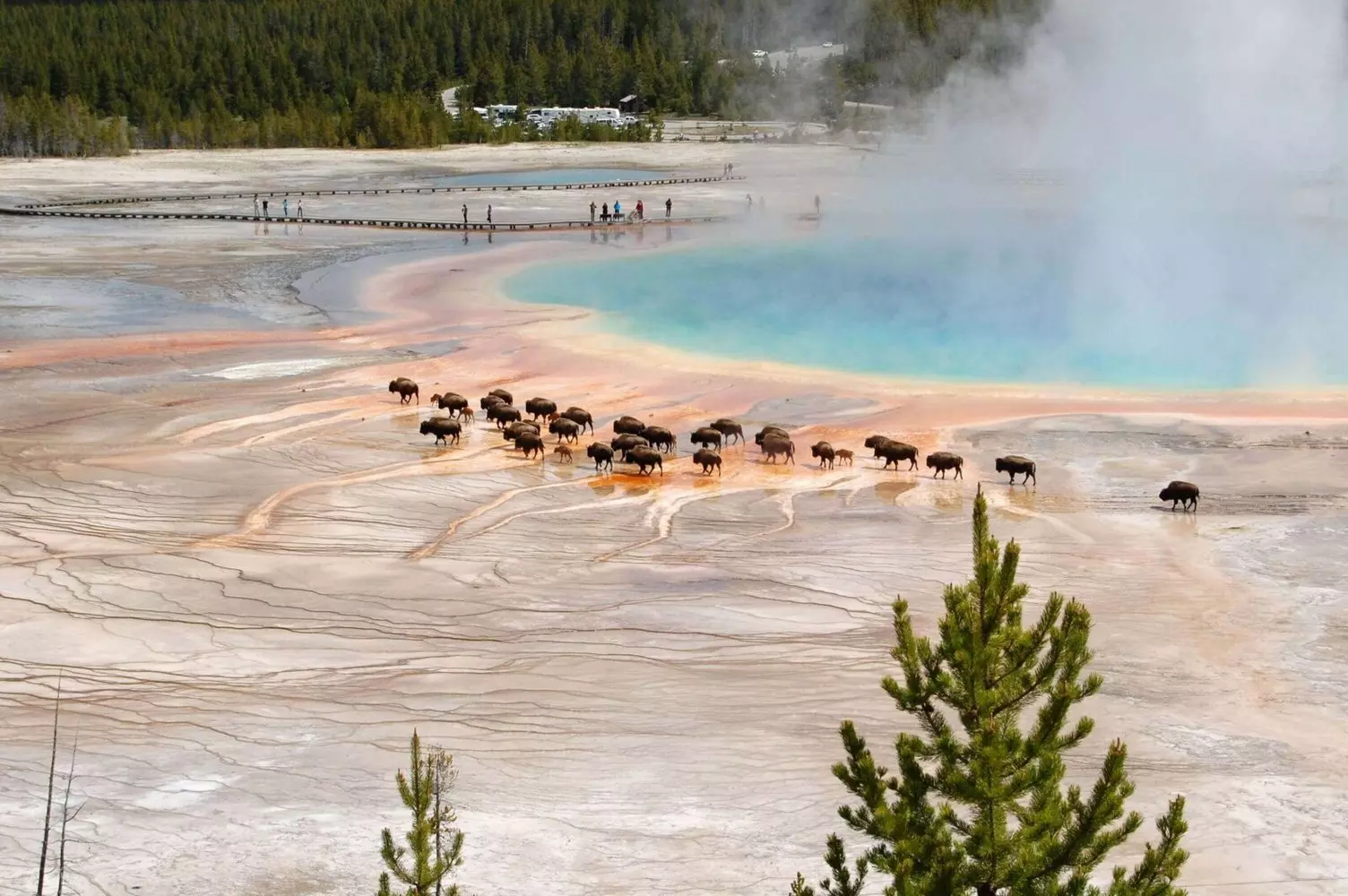
The History of Yellowstone: From Uncharted Lands to the World’s First National Park
Before the word “Yellowstone” appeared on maps, this land was known only to the native tribes. The Shoshone, Crow, Cheyenne, Blackfeet, and other peoples inhabited these territories for centuries, considering them sacred. They were especially fascinated by the hot springs and the strangely “breathing” earth — for many, these phenomena were connected to the spiritual world and regarded as gateways to another dimension.
- 01. First expeditions: when white men couldn’t believe their eyes
Until the mid-19th century, hunters’ and trappers’ tales of Yellowstone’s wonders were seen as myths. People couldn’t believe there was a place on Earth where boiling water burst from the ground, where water colors shifted from sky-blue to blood-red, and steam hovered like a ghost in the air. Everything changed after the Cook-Folsom-Peterson Expedition (1869), followed by the official government Ferdinand Hayden Expedition (1871). Accompanying them were artist Thomas Moran and photographer William Henry Jackson. Their works convinced the Congress that this place needed protection. - 02. March 1, 1872: the birth of national parks
On March 1, 1872, thanks to the initiative of geologists, artists, and naturalists, the U.S. Congress established Yellowstone National Park. The document was signed by President Ulysses Grant, and from that day America became the first country in the world to formalize the idea that nature must be preserved for future generations, not just for commercial value.
Interestingly, the term “national park” was not yet widely used. Yellowstone became the first model for parks later established in Canada, Australia, New Zealand, and Europe. - 03. Chaos and the military: the birth of order
In its early years, the park existed without a budget or protection. Poachers killed animals, tourists trampled terraces, and took minerals as souvenirs. By 1886, the situation became critical, and the U.S. Army was assigned to protect Yellowstone. Fort Yellowstone was built — a wooden military fort near the Mammoth Hot Springs.
Soldiers patrolled the area, enforced rules, caught poachers, and even kept a “visitor registry.” Their work became the prototype for future ranger services. The fort operated until 1918 and partially remains today as a historic district in the northern part of the park. - 04. Superintendents and administration
The first official park superintendent was Nathaniel Langford, a member of the Hayden Expedition. However, he had no salary or staff. Only with the army’s arrival and the creation of the U.S. National Park Service in 1916 did systematic work begin. Since then, the superintendent’s role has been crucial — responsible for the park’s development, preservation, and safety.
Today, the park is managed by a modern office coordinating everything from scientific research to visitor flow regulation. This office makes decisions about allowable routes, wildlife protection, and fire prevention. - 05. 20th century: fires, crowds, and ecology
One of the most dramatic events occurred in 1988 when wildfires engulfed nearly a third of the park. This was a crisis but also a turning point. Scientists began to rethink the role of fire in ecosystems. Fires started to be seen as a natural part of the forest life cycle.
With post-World War II tourism growth came the problem of overcrowding — roads, parking lots, exhaust fumes. The first environmental restrictions appeared: visitor quotas, seasonal closures for animal breeding, and waste recycling. - 06. Today: a protected heart of the planet
Now Yellowstone is not just a tourist attraction. It is a UNESCO World Heritage Site, a living laboratory, and an open-air geology textbook. Ecologists, seismologists, volcanologists, ornithologists, and historians work here. They monitor the supervolcano, control wolf populations, and study tourism’s impact on climate.
Yellowstone is not only about the past but also about the future. The 1872 idea — to preserve the land for those who come after us — remains more relevant than ever.
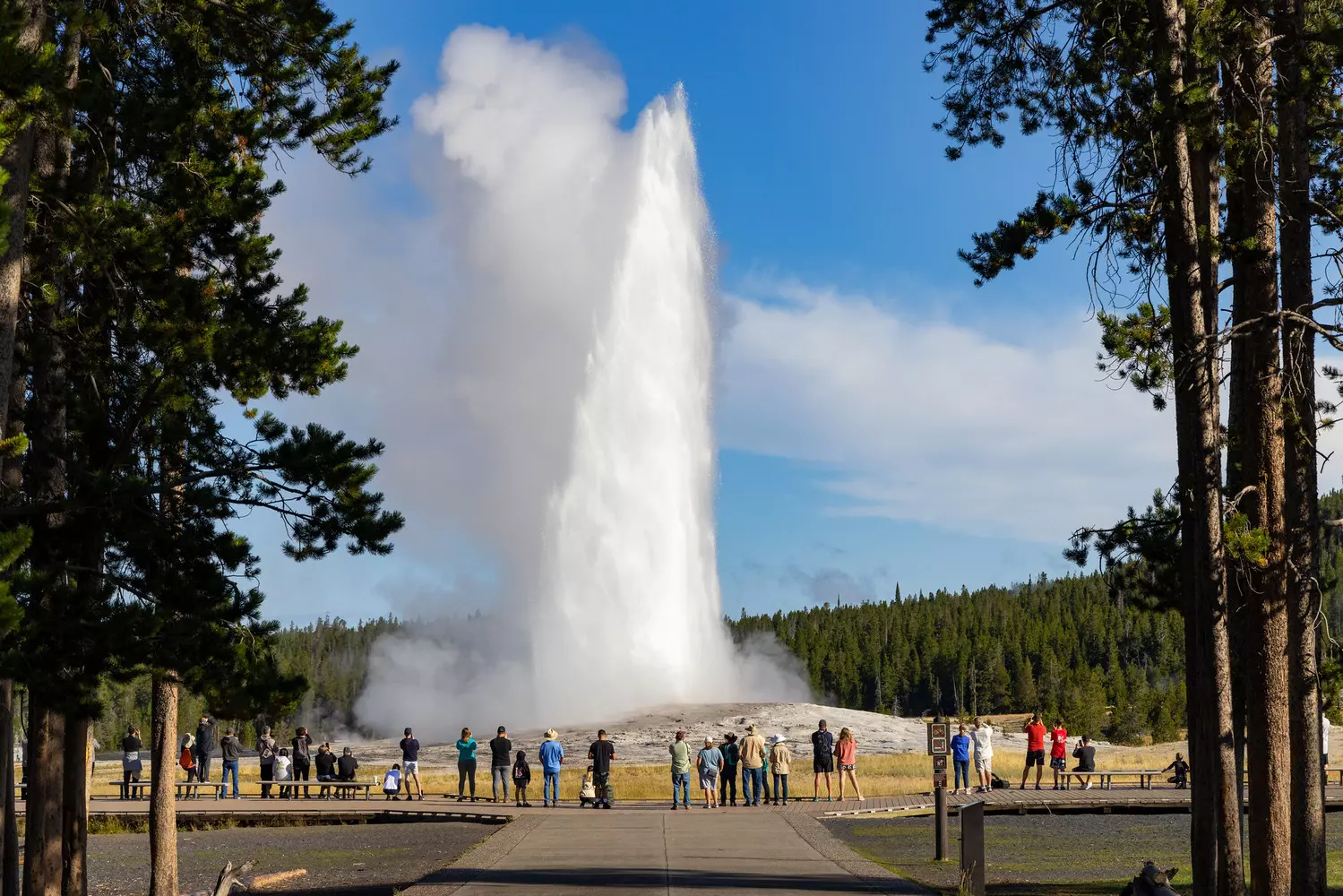
The Geography of Yellowstone: A Land Shaped by Fire and Ice
Yellowstone is not just a large park. It is a colossal natural complex where volcanoes, rivers, mountains, glaciers, and unique ecosystems converge. The geography of this place is not just impressive — it explains why the idea of a national park originated here.
- 01. Location at the junction of three states
The park stretches across three US states: Wyoming (the main part — about 96% of the territory), Montana, and Idaho. This location makes it not just a geographic point but a crossroads of natural worlds. The northwest areas are covered with mountain spruces and firs, the southern parts with plateaus and high-altitude plains, and the eastern parts with canyons and geyser fields. - 02. Elevation and terrain: from plains to alpine meadows
The average elevation above sea level is about 2400 meters, which makes the climate cool even in summer. The park’s highest point is Eagle Peak (3462 m), and the lowest is the Gardner River (1610 m). The park's terrain is diverse:
- Mountain ranges (Absaroka Range, Gallatin Range);
- Plateaus and calderas;
- Valleys (Lamar, Hayden) — perfect places for wildlife watching;
- Lakes (Yellowstone Lake) — large and of glacial origin;
- Rivers and waterfalls — literally cutting the park into natural zones.
- 03. The Yellowstone Caldera: a supervolcano beneath your feet
The geographic heart of the park is the Yellowstone Caldera, formed after a massive eruption about 640,000 years ago. It is one of the largest supervolcanoes on the planet, and its activity continues. It is due to underground magma and geothermal activity that there are so many geysers, hot springs, and mud pots here. - 04. Rivers and water systems
Major rivers flow through the park, including:
- Yellowstone — the longest river, originating from Yellowstone Lake;
- Medicine and Gallatin — flowing into the Missouri River;
- Fall and Teton — feeding the western plains.
These rivers not only shape the landscape but are key ecosystems themselves. Rare species of trout, otters, beavers, and waterfowl live in their waters.
- 05. Lakes: mirrors of the sky in the crater
The main lake is Yellowstone Lake. It lies at an elevation of 2357 meters, covers about 350 km², and has its own underwater geothermal activity. On a clear day, its mirror-like surface reflects the sky and mountains — a sight that can stop time. The water here is cold but clear and pure like glass. - 06. Canyons, terraces, and rock formations
The park features many unusual landforms shaped over thousands of years:
- Grand Canyon of the Yellowstone — yellow-colored rock walls, from which the park gets its name;
- Mammoth Hot Springs — limestone terraces forming snowy-white cascades;
- Tower Fall and Undine Falls — waterfalls cutting through basalt rocks.
Each zone has its own structure, color, smell, and even sound — from the bubbling of geysers to the silence of mountain peaks.
- 07. Ecosystems: four worlds in one park
Yellowstone is a crossroads of four distinct ecosystems, each creating its own flora and fauna:
- Subalpine forests — home to bears and elk;
- Mountain meadows — covered with a carpet of wildflowers in summer;
- Thermal zones — extreme environments inhabited by unique microorganisms;
- River valleys — favored spots for bison, wolves, and eagles.
To understand Yellowstone is to see how geography defines the essence of the place. Hot springs don’t just appear — they exist because magma churns beneath the ground. Wolves hunt in the valleys because they are open and rich in prey. Lakes and canyons are the result of millennia of glaciers and rivers.
It is precisely this combination — of elevation, water, heat, and cold — that makes Yellowstone not just a beautiful place, but a vital natural laboratory. It teaches us how all elements of the planet are connected: from moss on a rock to the wind atop a mountain ridge.
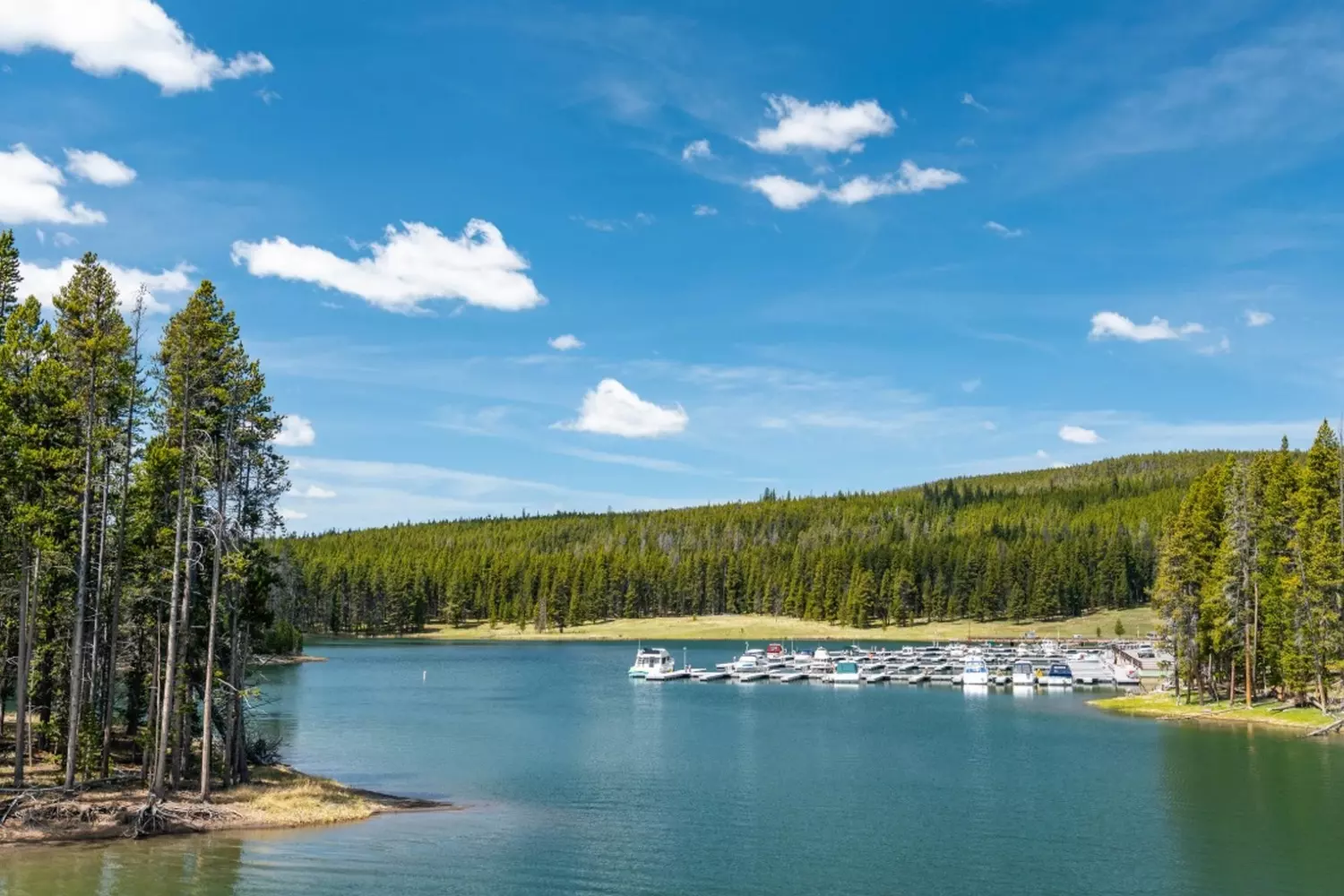
The Geology of Yellowstone: How the Park Formed on the Edge of a Supervolcano
Yellowstone is not just a beautiful place; it is a living proof of how the Earth breathes, moves, and creates something grand. The geology of this region is among the most unique in the world, and the park itself sits directly above a supervolcano that could remind us of its presence at any moment.
- 01. The beginning of the journey: millions of years ago
To understand Yellowstone, one must look far into the past. The Yellowstone Plateau began to form more than 16 million years ago, when tectonic forces started moving the North American Plate over a hotspot — an area where magma rises closer to the Earth’s surface.
Since then, the hotspot has shifted eastward, leaving behind a chain of volcanoes, lava plateaus, and calderas. Yellowstone is the last stop on this fiery trail. - 02. Three great eruptions
Geologists identify three superintense eruptions that radically changed the park’s landscape:
- 2.1 million years ago — the first and most powerful eruption, which formed the Island Park caldera.
- 1.3 million years ago — the second eruption, which formed the Henry's Fork caldera.
- 640,000 years ago — the most recent massive eruption, which created today’s Yellowstone Caldera (70 × 45 km).
These eruptions threw so much ash into the atmosphere that ash layers have been found as far away as Florida and the west coast of Mexico.
- 03. Post-volcanic activity: the park that “hisses”
Today, Yellowstone is the most active hydrothermal region on the planet. This means that geothermal processes constantly occur beneath the earth’s surface:
- Fumaroles — steam vents releasing superheated steam;
- Mud volcanoes — boiling mud masses;
- Geysers — underground reservoirs of water that erupt steam and water upwards;
- Hot springs — both calm and bubbling, colored by minerals and bacteria.
Beneath the park’s surface lies a massive magma body known as the Yellowstone magma chamber. It heats underground waters, creating the geothermal phenomena that attract millions of tourists.
- 04. Seismic activity: the living breath of the earth
Yellowstone experiences thousands of earthquakes every year. Most are barely noticeable, but this is no reason to panic. These underground tremors are a natural part of life in a volcanic region.
The national park services, together with scientists from the USGS (United States Geological Survey), carefully monitor all vibrations, soil temperatures, water chemistry, and even ground tilting. The park operates the Yellowstone Volcano Observatory, where geological data is recorded around the clock.
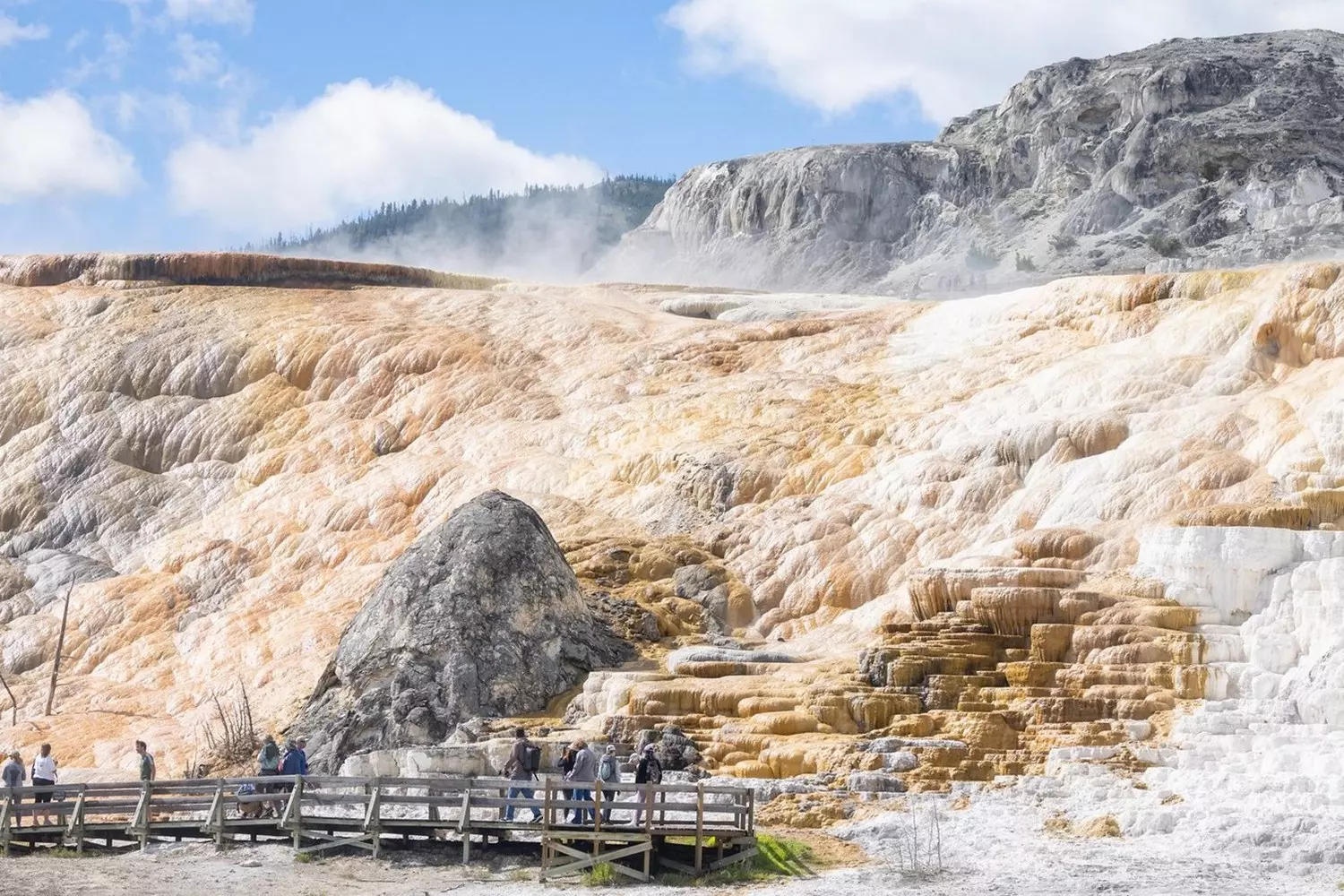
Yellowstone Supervolcano: Real Threat or Scientific Myth?
When it comes to Yellowstone, the word “supervolcano” inevitably comes up. It sounds alarming, almost like the plot of a disaster movie. The internet is full of apocalyptic theories: they say a massive eruption is imminent, one that would overshadow Vesuvius, St. Helens, and Krakatoa combined. But what’s reality, and what’s myth? Let’s figure it out.
- 01. What is a supervolcano?
A supervolcano is a volcano whose eruption ejects more than 1000 cubic kilometers of ash and magma material into the atmosphere. That’s thousands of times more than regular volcanoes. The consequences of such events can be global: climate change, species extinction, mass human migration.
The Yellowstone Caldera is exactly the result of one of these superintense eruptions that occurred about 640,000 years ago. Since then, the area remains geologically active. - 02. Scenarios: what could happen?
Scientists generally consider several hypothetical scenarios:
- Megablast (catastrophic scenario)
Unlikely but possible over geological timescales. It would involve a massive release of magma, ash, and sulfur that could alter the climate for years and disrupt agriculture worldwide. - Local eruption (more realistic scenario)
For example, an eruption within one of the thermal areas, forming a new crater and causing localized damage. - Hydrothermal explosion
A smaller but powerful local event where underground water turns to steam and bursts out. This has happened in Yellowstone before, though on a relatively safe scale.
- 03. What do scientists say?
The United States Geological Survey (USGS) together with the Yellowstone Volcano Observatory (YVO) monitors dozens of activity parameters daily:
- Dozens of seismographs detect even the slightest underground tremors;
- GPS stations measure ground uplift and subsidence;
- Spectrometers record gas emissions;
- Temperature sensors track the activity of hot springs.
The bottom line: there are no signs of an impending eruption. Moreover, the probability of a supervolcanic explosion in the next several thousand years is estimated at less than 0.0001% per year — lower than the chance of dying from an asteroid impact.
- 04. Where does the panic come from?
Many fears are fueled by the media and pop culture. Documentaries, YouTube channels, and pseudoscientific blogs love exaggeration. One popular myth is that so much magma has accumulated under the park that “an eruption is inevitable.” In reality, most of this magma is partially molten and incapable of an immediate explosion.
Furthermore, geologists emphasize that even if the volcano were ready to erupt, it would take decades of preparation, with clear signs visible long before the event. - 05. Benefits of the supervolcano?
Surprisingly, the Yellowstone supervolcano offers humanity not only reasons for concern but also enormous scientific opportunities:
- Geologists learn to predict volcanic behavior;
- Biologists study thermophilic organisms living in extreme conditions — this could help in drug development;
- Climatologists investigate how geological events impact the atmosphere.
Yellowstone has become one of the most studied geological zones on the planet, and observations here help protect humanity from future catastrophes elsewhere.
A supervolcano is not fiction. It is a fact. But it is also a fact that it poses no immediate threat. Yellowstone is safe to visit. If there were even the slightest risk of a massive eruption, the park would be closed and the population evacuated.
For now, all the supervolcano offers us is the chance to see the planet from within, to feel the power of the Earth, and to witness a unique natural phenomenon. Fear is better left to the screenwriters of Hollywood.
Yellowstone is not a threat, but an opportunity. An opportunity to understand how the Earth works, how it evolves, and how deeply we are all connected to its breath.
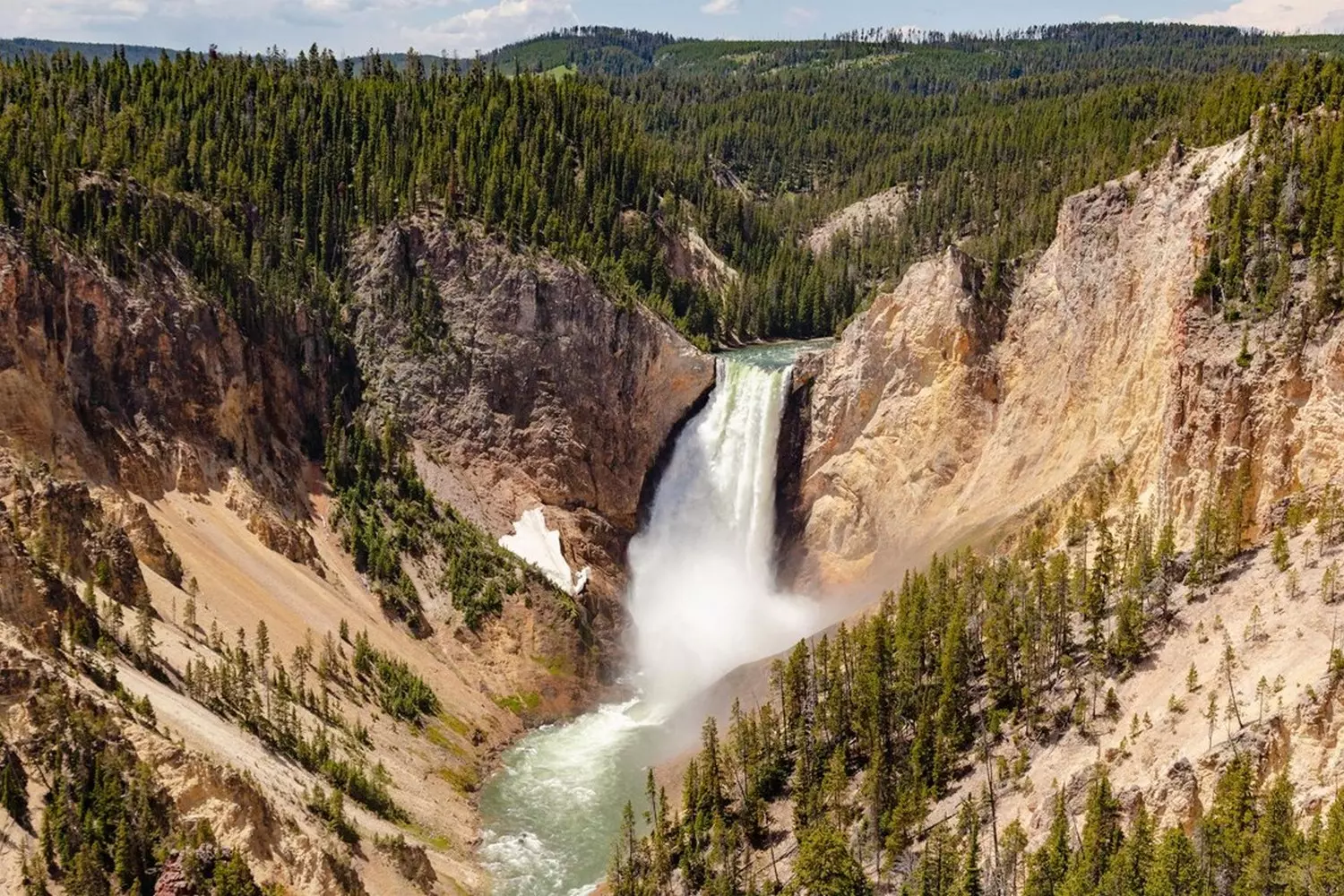
Flora and Fauna of Yellowstone: Life in Wild Harmony
Yellowstone is not just volcanoes and geysers; it is a true living world where nature reveals all its power and diversity. Here, hundreds of species of plants and animals coexist in harmony, many of which are unique and protected. The park is a vast laboratory of life, where every inhabitant plays an important role in the ecosystem.
- 01. Plant Life: The Green Framework of the Park
Yellowstone encompasses various natural zones — from dense forests to open meadows and high mountain peaks. The park is home to more than 1700 species of plants, including:
- Coniferous forests — dominated by spruces, firs, pines, and larches. These mighty trees provide shade and protect the soil from erosion.
- Deciduous forests — aspens, maples, and poplars are found at lower elevations and in valleys.
- Alpine meadows — in summer, they are covered with a colorful carpet of wildflowers, including buttercups, bellflowers, and lupines.
- Thermal zones — conditions here are extreme, and vegetation consists of specialized microorganisms and thermophilic bacteria that color the springs in bright hues — from yellow to vivid red.
- 02. Animal Life: From Formidable Bears to Quiet Otters
The fauna of Yellowstone is among the richest of all U.S. national parks. More than 60 species of mammals, over 300 species of birds, as well as numerous reptiles, amphibians, and fish, inhabit the park.
- Bison — the symbol of the park and the largest land mammals in North America. Their herds can number in the hundreds, roaming freely across plains and valleys.
- Grizzly bears and black bears — key predators that help maintain ecological balance. Bears often attract tourists’ attention, but safety and keeping distance are important.
- Wolves — reintroduced in 1995, they play a crucial role in controlling ungulate populations, positively impacting ecosystem health.
- Elk and deer — found in forests and meadows, especially active feeders during spring and summer.
- Lynxes, coyotes, and red foxes — secretive predators rarely seen but constantly present in the park.
- Eagles and falcons — soar in the skies hunting fish and small mammals.
- Otters and beavers — actively shape river systems, creating ecological niches for many other species.
- 03. Water Bodies and Their Inhabitants
Several species of trout, including rainbow and Kamchatka trout, live in Yellowstone’s rivers and lakes. Fishing in the park is strictly regulated to maintain balance. The waters of Yellowstone Lake also harbor rare species of invertebrates and microorganisms, some of which live exclusively in thermal springs.
Yellowstone is an example of a healthy ecosystem where natural processes occur without human interference. Thanks to the abundance of predators and herbivores, dense vegetation, and water resources, a stable cycle of life is maintained here.
Animals and plants of Yellowstone have unique adaptations to extreme conditions:
- Coniferous trees have needle-like leaves that reduce moisture loss in winter.
- Wolves and bears hibernate to survive harsh winters.
- Fish and amphibians are adapted to cold, clean water.
- Thermophilic microorganisms thrive at water temperatures that would kill most other species.
Interesting fact: Yellowstone is home to a rare and ancient species of fir — Abies lasiocarpa (subalpine fir), which can live for 300 years or more.
The park actively works to protect threatened species and manages populations to prevent overpopulation. Wolf restoration programs, bison monitoring, and combating invasive plants are just some of the efforts aimed at maintaining balance.
Yellowstone is not just a place to see wildlife. It is a place where the very essence of nature lives: struggle, survival, beauty, and interdependence. Here, every leaf and every paw is part of the great story of life on Earth.
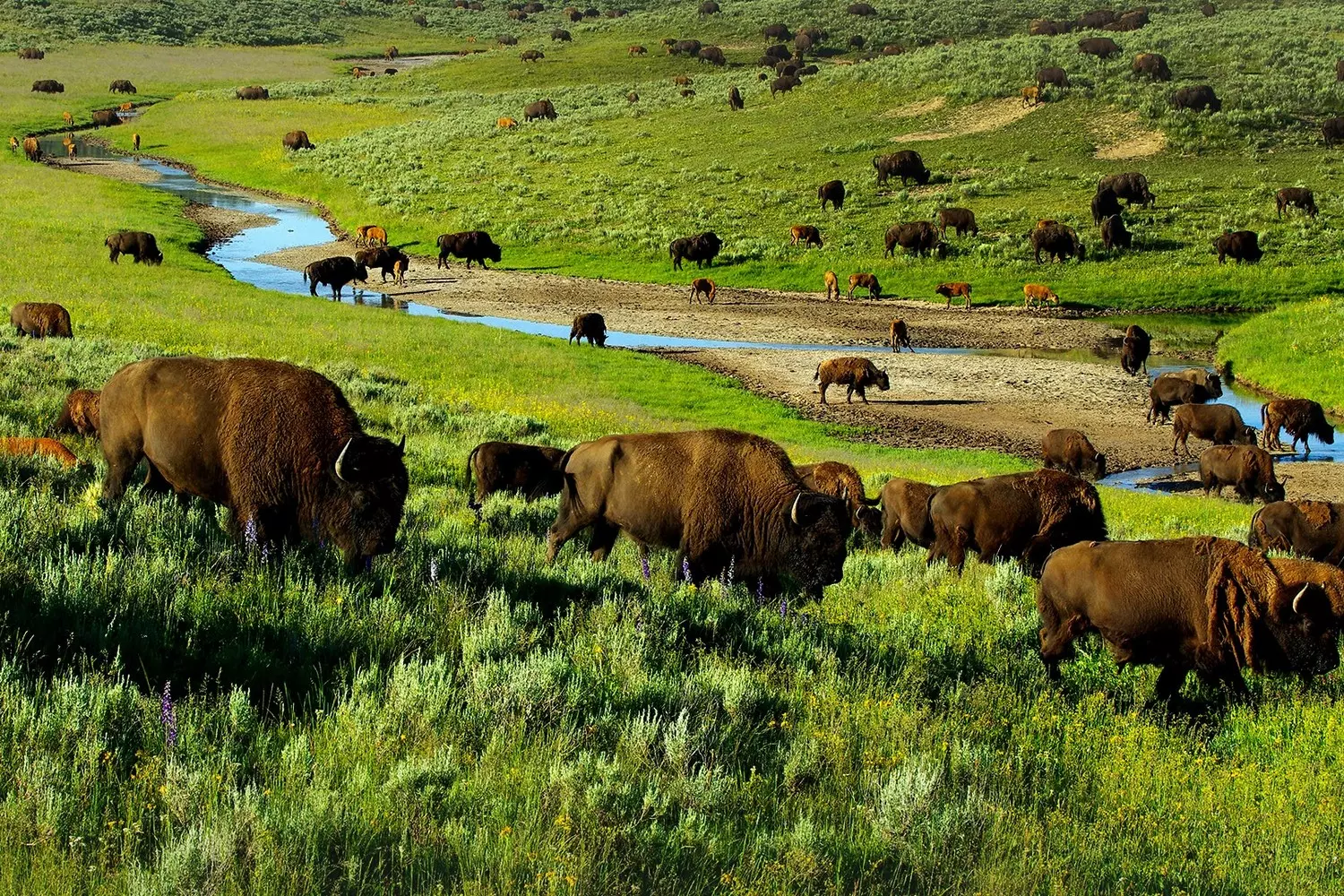
Wildfires in Yellowstone: Fire as a Force of Nature and Regeneration
Forest fires are a phenomenon that causes fear and anxiety in many people. But in Yellowstone, fire is not just a destroyer — it is one of the driving forces of the ecosystem. Understanding the role of fires here helps us see natural processes and their importance to the park’s health in a new light.
- 01. The Nature and Causes of Fires in Yellowstone
Yellowstone is a vast expanse of forests, meadows, and mountain ranges where dry summers, frequent thunderstorms, and abundant vegetation create conditions for forest fires. The main causes are:
- Lightning strikes — the most common natural ignition source.
- Human factors — careless handling of fire by tourists and park workers.
- Accumulation of dry vegetation — old dead wood and fallen leaves create fuel for fires.
- 02. The History of Major Fires in the Park
The most famous and studied event was the 1988 forest fire, which burned about 36% of the park’s territory — nearly 793,000 hectares. This fire was unprecedented in scale and sparked intense debates about fire management methods. - 03. Why Was the 1988 Fire Special?
- It started from many separate ignition points — from lightning and human activity.
- The fires merged into massive “firestorms,” transforming the landscape.
- Smoke blocked the sun for many days, and firefighters battled the flames for months.
- Forests, animals, and infrastructure were damaged.
However, researchers found that the fire helped rejuvenate the ecosystem. The fire cleared old vegetation, giving space for new plants. Seeds of many trees, such as pines, germinate only after fire. The fire increased biodiversity by creating new habitats.
- 04. Modern Approach to Fires
Today, Yellowstone has a thoughtful fire management policy:
- Supporting natural fires in areas where they do not threaten people and infrastructure.
- Rapid response to major fires to protect visitors and facilities.
- Monitoring forest conditions and predicting dangerous periods.
- Educational programs for visitors about safety and the role of fire.
Interesting fact: fire is the architect of Yellowstone. Without forest fires, Yellowstone would lose its diversity and beauty. Fire stimulates grass growth, improves soil, lets light reach young trees, and creates habitats for many animals. Essentially, fires are a natural cycle of renewal, not just a disaster.
How Should Tourists Behave During Fire Danger?
- Follow park warnings and recommendations.
- Do not light fires outside designated areas.
- Do not smoke or discard unextinguished cigarettes.
- Report any fires or suspicious activity to park staff.
Forest fires in Yellowstone are a lesson in respect for nature and understanding its laws. They remind us that nature lives by its own rules, and sometimes destruction is just the beginning of new life. And the park, having gone through fire, becomes even stronger and more beautiful.
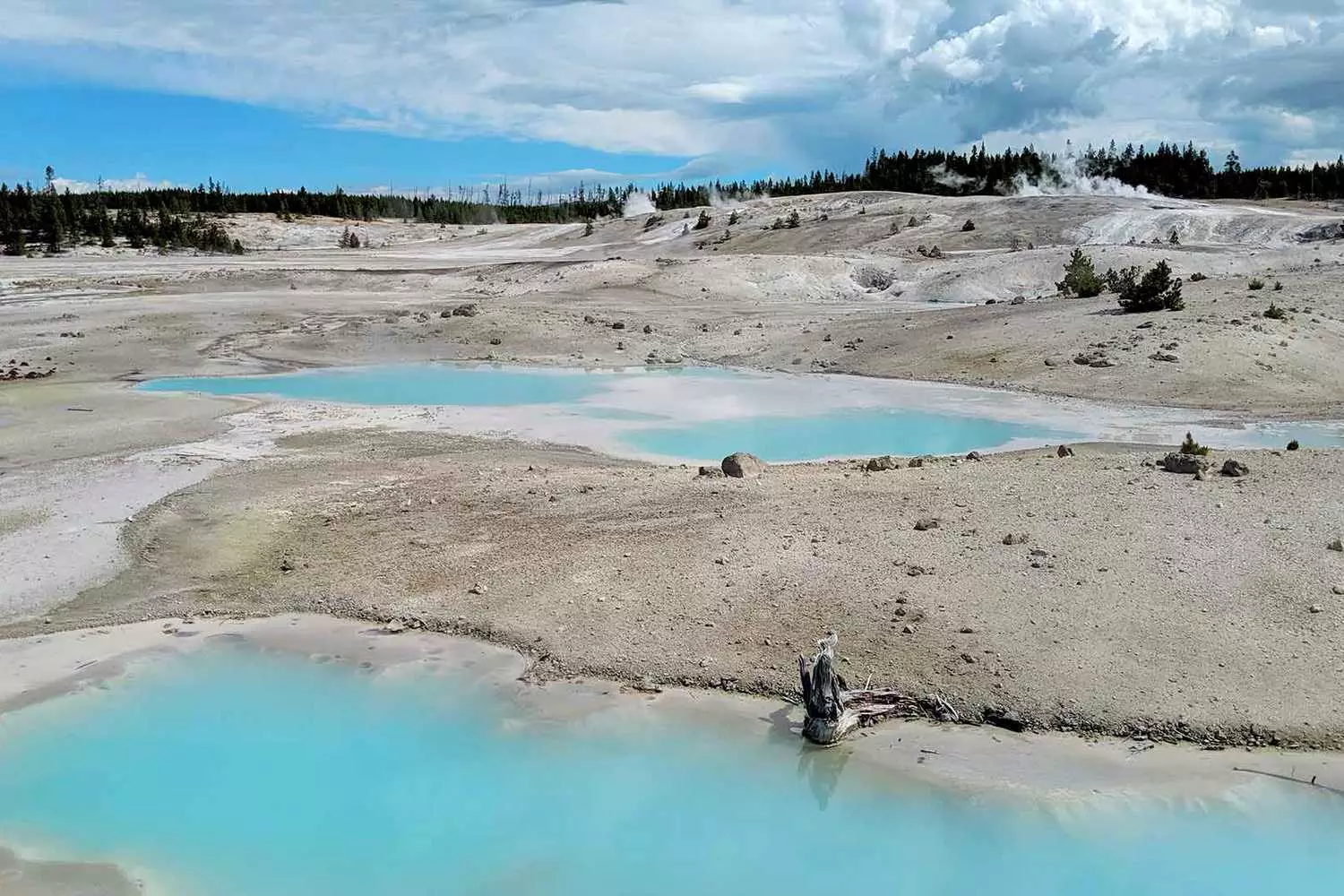
Climate of Yellowstone: Weather as Part of Its Unique Nature
The climate of Yellowstone is one of the key factors shaping its amazing landscape and ecosystem. Here, high-altitude cold winds, warm sunny days, and snowy winters intertwine, creating a variety of conditions in which plants and animals live. Understanding the weather characteristics will help you better prepare for your trip and make it as comfortable as possible.
- 01. Geographical Features and Their Impact on Climate
Yellowstone is located on a high plateau — the park’s average elevation is about 2400 meters above sea level. This altitude causes significant temperature and precipitation fluctuations throughout the year. The park is also surrounded by mountain ranges that influence the movement of air masses and precipitation distribution. - 02. Four Seasons — Each with Its Own Character
- Spring in Yellowstone is a time of nature awakening. However, temperatures here can be very changeable: days may be sunny and relatively warm, while nights are cold with frost. During this time, snow melts, raising river levels and creating waterfalls. Animals are especially active in spring — the breeding and birthing season begins.
- Summer is the most popular season for visiting the park. Average daytime temperatures range from 15 to 25 °C, ideal for hiking and tours. Evenings, however, can be cool, especially in the mountains. Short thunderstorms are most frequent during this period, which nourish the forest and sometimes cause lightning fires.
- Autumn brings bright foliage colors and the first frosts. Temperatures begin to drop, especially at night — the first snowfalls are possible. This time is perfect for photography enthusiasts and peaceful walks, as the number of tourists decreases and nature becomes especially picturesque.
- Winter in Yellowstone is harsh and snowy. Average temperatures drop to -10 °C and below, with snow cover reaching several meters. This season turns the park into a real fairy tale but requires special preparation from visitors. Snowmobiling, skiing, and winter tours become popular activities.
- 03. Precipitation and Humidity
Total precipitation in Yellowstone is about 400-500 mm per year, most of which falls as snow in winter. In summer, precipitation mostly comes as thunderstorm showers, which help maintain soil moisture and nourishing river flows. - 04. Wind and Atmospheric Pressure
Cool winds often blow across the plateau, especially in open areas and mountain passes. Atmospheric pressure in the mountains can change rapidly, affecting the well-being of visitors, especially those unaccustomed to mountain climates.
The climate of Yellowstone is an amazing palette of weather phenomena that turns every season into a unique adventure. Understanding this weather will help you not just observe the park but truly feel its life in all its manifestations.
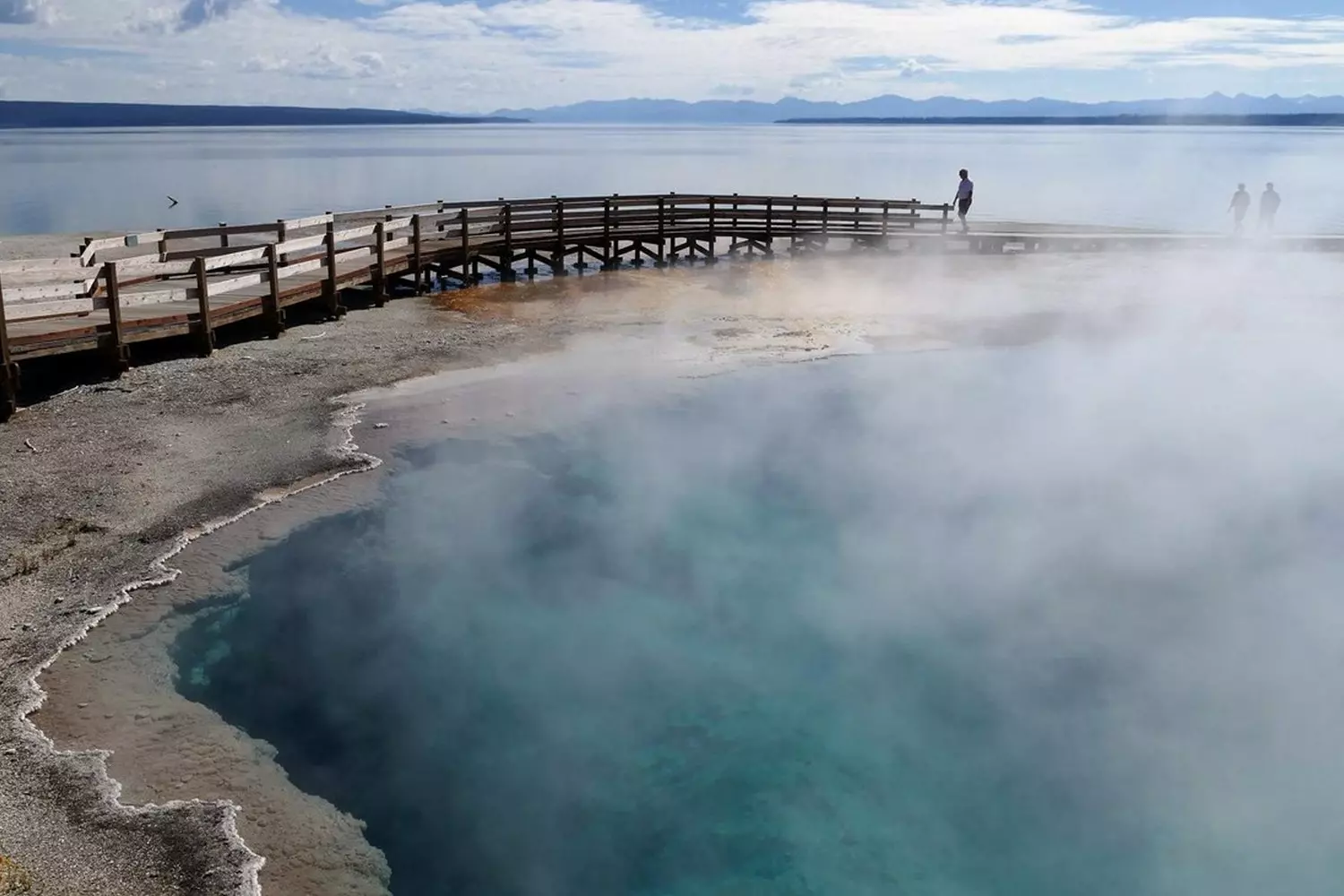
What to See in Yellowstone: A Detailed Itinerary of the Main Natural Wonders
Yellowstone is a vast open-air natural museum where every point on the route is a unique adventure and a spectacular sight. From geysers to canyons, from icy lakes to wild valleys filled with wildlife — in this section, we will tell you about the most impressive places that you absolutely must visit. Plus, we’ll add a few hidden gems to make your journey not only spectacular but also rich with discoveries.
- 01. Old Faithful Geyser — “Old Reliable”
Old Faithful is the main symbol of Yellowstone and one of the most famous geysers in the world. Its name says it all: eruptions occur with remarkable regularity, on average every 90 minutes. This natural show features a powerful column of boiling water and steam shooting up to 55 meters high, accompanied by hissing and roaring sounds. What you should know:
- The best place to watch is the specially equipped viewing platform, offering a full view of the spectacle.
- The waiting time is not boring: nearby there are trails and informational signs explaining the geyser’s mechanism.
- Don’t forget your camera: you can even take photos in motion, the effect is guaranteed.
- 02. Grand Prismatic Spring — Yellowstone’s Rainbow
This is the largest hot spring in the USA and the third largest in the world. Its bright rainbow colors are the result of thermophilic bacteria adapted to the extreme water temperatures (around 70 °C). From a bird’s-eye view, for example from the observation trail on Fairy Falls Trail hill, an incredible picture opens up — like Van Gogh’s watercolor palette. Features:
- The colors change depending on the season and the intensity of sunlight.
- The water is clear and so hot that you can get burned in seconds, so you must not approach the edge.
- There are many small hot springs and fumaroles nearby.
- 03. Yellowstone Lake — Nature’s Mirror
This is the largest high-altitude lake in North America — its area exceeds 350 square kilometers. The water is crystal clear and transparent, especially at dawn, when everything around is wrapped in gentle silence and light mist. What’s special here:
- You can see rare birds on the lake, including American eagles and ducks.
- Kayaking and boating are popular, opening views of picturesque shores and mountain peaks.
- In cold months, the lake is covered with thick ice, creating a completely different, winter world.
- 04. Mammoth Hot Springs — Stone Terraces from Another World
This is a unique geothermal area where hot mineral waters form fantastic terraces made of sedimentary minerals — mainly calcite and other salts. They look like something out of a sci-fi movie — snow-white, creamy, with shades of yellow and orange, sometimes covered with green moss. Interesting details:
- The terraces are constantly changing — new layers form, old ones erode, as if the park is alive.
- Here is the historic Mammoth Fort, built in the late 19th century, which became the base for the park’s first rangers.
- Nearby are the scenic hot springs of Boiling River, where you can even bathe (in specially designated areas).
- 05. Lamar Valley — “American Safari”
Lamar Valley is one of the best places for observing wildlife in its natural state. Here you can see herds of bison, moose, deer, and if you’re lucky — packs of wolves roaming the morning mist. What you need to know:
- The best time to observe is early morning and evening.
- There are several viewing platforms and hiking trails throughout the valley.
- Experienced guides from American Butler can help find rare animals and tell you about their habits.
- 06. Grand Canyon of the Yellowstone — Majestic Canyon and Waterfalls
The Yellowstone Canyon is a deep gorge about 30 kilometers long and up to 360 meters deep. Its walls are dotted with shades of yellow, red, and orange, which gave the park its name. The main attractions are two waterfalls:
- Lower Falls — nearly 94 meters high, impressive in power and roar, heard from afar.
- Upper Falls — smaller but no less picturesque, with cozy walking trails.
Viewing platforms Artist Point, Lookout Point, and Inspiration Point offer the best views.
- 07. Norris Geyser Basin — the hottest and most active area
This is the oldest and most geothermally active area in Yellowstone. Here water and steam burst from the ground with incredible force and temperatures up to 93°C! Norris is home to geysers such as Steamboat Geyser — the tallest geyser in the world, capable of shooting water up to 90 meters high. - 08. Hayden Valley — Pasture for Giants
Another gem for wildlife lovers. Here you can often see huge herds of bison and many birds, including eagles and herons. The gentle hills and wide meadows create the atmosphere of wild America unchanged for centuries. - 09. West Thumb Geyser Basin — Thermal Springs by the Lake
This is a small but very picturesque area where hot springs and geysers are located right on the shore of Yellowstone Lake. Here water and steam blend amazingly with the lake’s reflections and the bright colors of mineral deposits. - 10. Tower Fall — Waterfall with a Dramatic View
Tower Fall is one of the most scenic waterfalls in Yellowstone, striking with its height — about 40 meters. Its name comes from the bizarre tower-like rocks surrounding the waterfall, resembling medieval fortress structures. The falling water is accompanied by a roar and melodic sound, creating an atmosphere of primal natural power. What you should know:
- There is a convenient walking trail about 1 km long nearby, suitable for family strolls.
- The best views are from observation platforms located both above and below the waterfall.
- Animals like moose and bison are often seen around the waterfall, adding to the experience.
Yellowstone is not just a park; it is a collection of natural wonders, each leaving a deep mark in your memory. Follow this route, and your journey will turn into a true discovery where the beauty, power, and harmony of nature accompany you at every step.
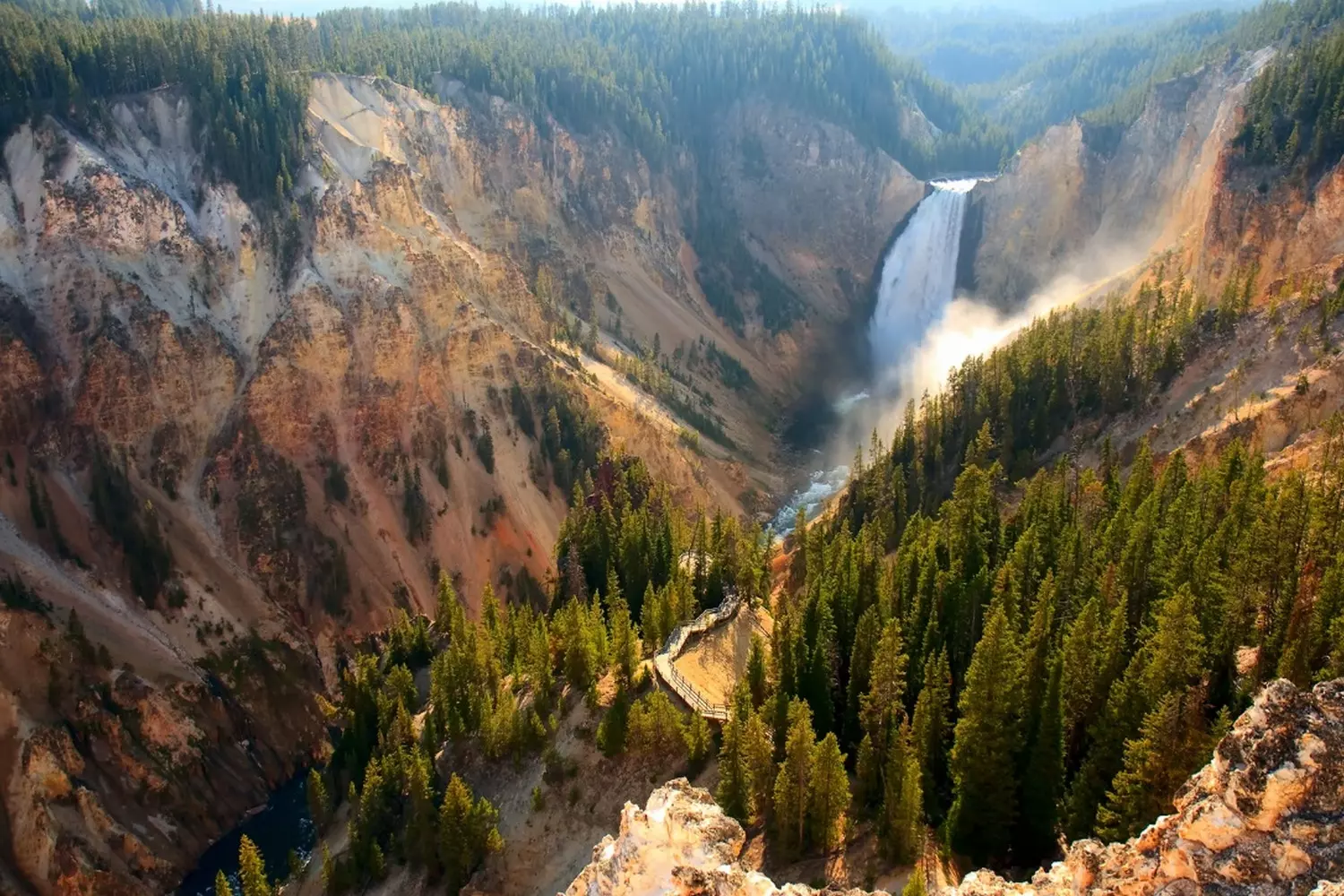
Things to Do in Yellowstone: Experiences and Activities for Every Taste
Yellowstone is not just a park for nature watching — it’s a whole world of opportunities for active recreation, adventure, and deep immersion in the wilderness. Here, everyone can find an activity to their liking — from leisurely walks to hot springs to extreme safaris and photo tours. In this section, we’ll tell you about the most interesting and popular activities that make a trip to Yellowstone unforgettable.
- 01. Watching Geysers and Thermal Springs
One of the main entertainments is walking along trails leading to geothermal wonders. Visiting Old Faithful, Grand Prismatic Spring, Mammoth Hot Springs, and other hot springs will not only give visual pleasure but also help you better understand natural processes.
- Be sure to bring binoculars and a camera.
- Travel on designated paths — safety first.
- Learn from guides and information boards about the features of each site.
- 02. Wildlife Safari
Yellowstone is a place where you can see the true owners of nature in their natural habitat. In the Lamar and Hayden valleys, you can encounter bison, bears, wolves, elk, and many birds.
- The best time for observation is early morning and dusk.
- Remember to keep your distance and do not feed the animals.
- 03. Hiking and Trekking
Yellowstone offers over 1600 kilometers of hiking trails — from short walks to multi-day hikes. You can choose trails that suit your skill level and duration preferences.
- Popular routes include: to Lower Falls, around Yellowstone Lake, to the thermal springs in the Norris Basin area.
- Prepare for weather changes — always carry water, food, and a first aid kit.
- Be sure to take a map and use GPS if hiking alone.
- 04. Fishing
Yellowstone is famous for its rivers and lakes rich in fish fauna. Fishing here is a popular and relaxing activity.
- Trout, chub, and other species are allowed to be caught.
- A fishing license is required — it can be obtained at park information centers.
- Fly fishing is especially popular among enthusiasts.
- 05. Biking and Mountain Biking
Some roads and trails in Yellowstone are open to cyclists. This is a great way to explore the park quickly and actively.
- Be sure to follow traffic rules and stay on designated routes.
- In some zones, bike traffic is limited to protect nature and for safety.
- Bring a repair kit and extra water.
- 06. Photo Tours and Bird Watching
Yellowstone is a paradise for photographers and ornithologists. Early mornings and sunsets provide magical light, and the variety of birds and animals offers rich material for shooting.
- Organize a tour with a professional photographer guide.
- Use telephoto lenses for wildlife photography.
- Remember to keep quiet and respect the animals.
- 07. Winter Activities
In winter, the park transforms into a snowy kingdom with opportunities for snowmobiling, skiing, and snowshoeing.
- Special trails are available for skiers and hikers.
- Be sure to wear warm clothing and use proper equipment.
- 08. Visiting Historical Sites and Museums
Yellowstone preserves several historical landmarks — Fort Mammoth, old buildings, and museums telling the stories of the first explorers and the park’s early days.
- Visiting these places helps deepen your understanding of the park’s history.
- Museums often hold exhibitions and lectures.
- 09. Camping and Outdoor Relaxation
For those who want to feel fully immersed in the wild, the park offers equipped campgrounds and tent sites.
- Be sure to book spots in advance — the park is very popular.
- Follow safety rules, especially regarding wildlife interaction.
- Use special food storage containers to avoid attracting animals.
Yellowstone is not just a place but an opportunity to touch the oldest and most powerful forces of nature, to fill yourself with energy and inspiration. Everyone will find something here: whether it’s calm by a hot spring, the adrenaline of a safari, or creativity through the camera lens. The important thing is to start — and this world will open up to you in all its beauty and power.
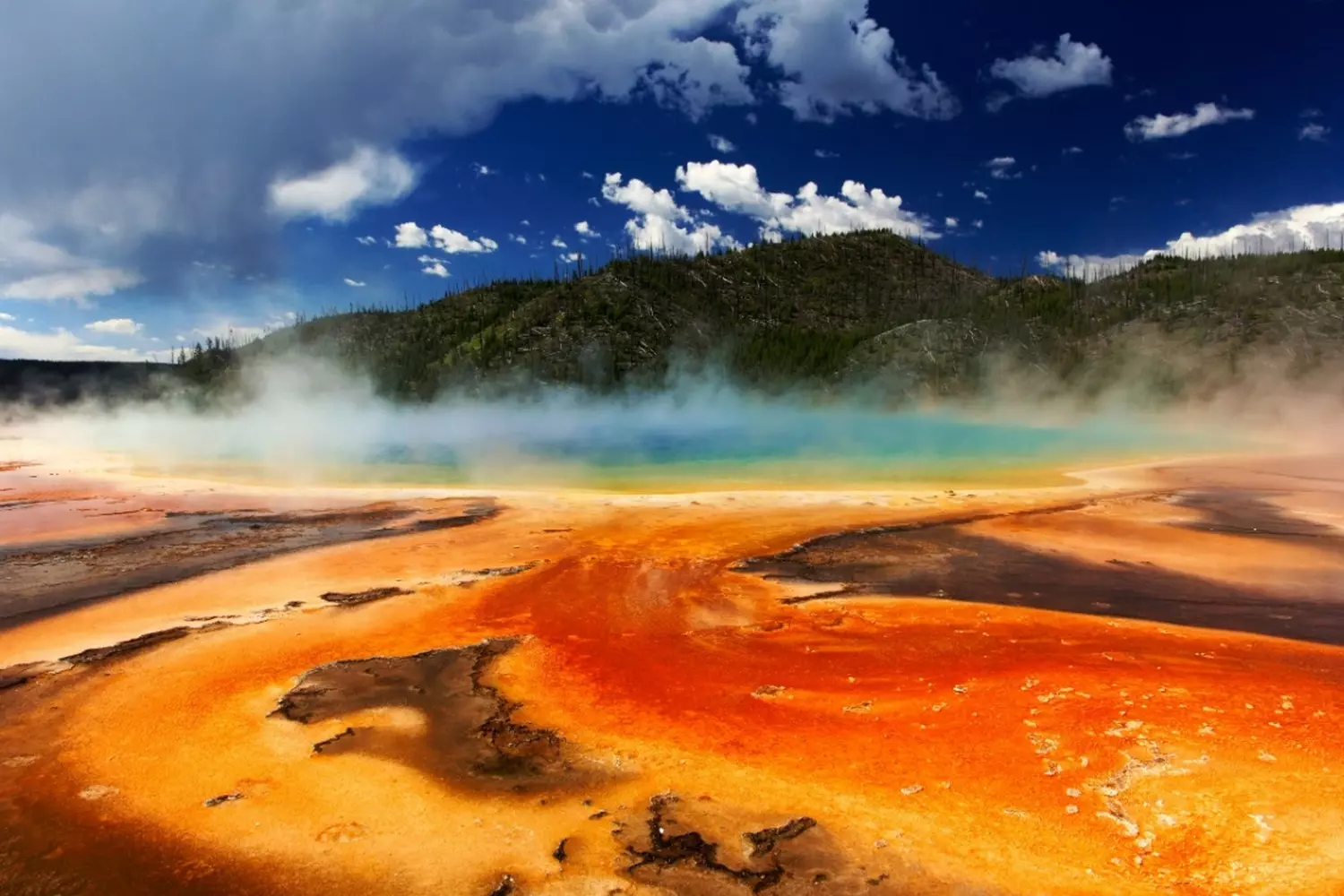
How to Get to Yellowstone: All Routes to America’s Greatest National Park
When planning a trip to Yellowstone, it’s important to think in advance about how to get to this unique natural treasure. Thanks to its location across three states — Wyoming, Montana, and Idaho — the park is surrounded by several convenient transportation hubs and has well-developed infrastructure. In this section, we’ll explain in detail all the available ways to reach Yellowstone — comfortably and hassle-free.
- 01. Nearby Airports: Where to Fly?
The closest major airports to the park are in three cities — the best choice depends on your travel route and regional plans:
- Bozeman Yellowstone International Airport (BZN), Montana
About 90 km from the park’s West Entrance. Offers regular flights from major U.S. cities like Denver, Chicago, Seattle, Los Angeles, and others. - Jackson Hole Airport (JAC), Wyoming
Located about 130 km from the South Entrance of Yellowstone. Surrounded by mountains, this airport is unique as it lies within Grand Teton National Park, right next to Yellowstone. Ideal if you plan to visit both parks. - Idaho Falls Regional Airport (IDA), Idaho
Roughly 160 km west of the park. It handles fewer flights but may be convenient if you’re coming from the west.
- 02. Traveling by Car — The Most Flexible and Popular Option
After arriving at one of the airports, the best option is to rent a car. This gives you the freedom to explore the park and access its hidden gems.
- Roads are paved and well-maintained, though some stretches can be narrow and winding.
- Main attractions have designated parking areas — often free, though they may be crowded in peak season.
- 03. Main Entrances and How to Find Them
Yellowstone has five major entry gates:
- North Entrance (via Gardiner, Montana) — the most popular, close to Bozeman Airport.
- West Entrance (West Yellowstone, Montana) — also near Bozeman, convenient for visiting Mammoth Hot Springs.
- South Entrance (Jackson, Wyoming) — ideal for combining Grand Teton and southern Yellowstone exploration.
- East Entrance (Cody, Wyoming) — a scenic mountain route, less crowded.
- Northeast Entrance (Silver Gate, Montana) — great for wildlife viewing in Lamar Valley.
- 04. Public Transport
Public transportation in the Yellowstone area is limited, making self-guided trips without a car challenging. However, there are tourist buses and shuttles — in the summer season, regular routes connect key locations in the park.
Getting to Yellowstone means opening the door to a world of stunning nature and adventure. The key is to choose the most convenient route and plan the details in advance, so your journey will be smooth, comfortable, and full of unforgettable impressions.
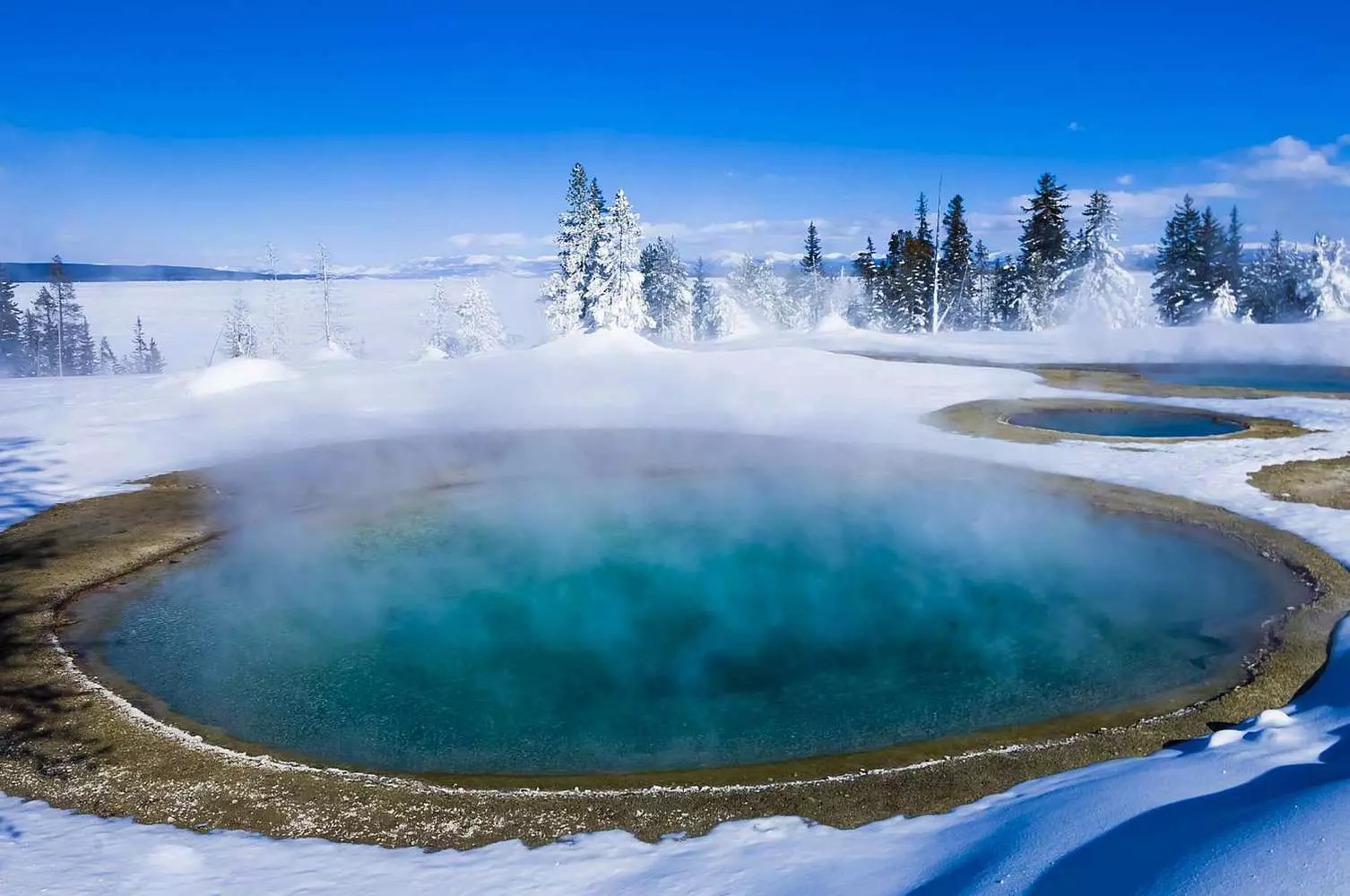
Where to Stay in Yellowstone: Comfort and Authenticity Amidst the Wilderness
When planning a trip to Yellowstone, choosing the right place to stay is key. Your choice will not only affect comfort and convenience but also shape your overall travel experience. In this section, we’ll explore the most popular accommodation options — from rustic lodges inside the park to cozy hotels in nearby towns, along with adventures in campgrounds and unique guided stays with American Butler.
- 01. Park Lodges — Immersed in Nature with Comfort
Yellowstone is home to several historic lodges and hotels that allow you to wake up and fall asleep to the sounds of wildlife.
- These lodges are located right next to the park’s main natural attractions — geothermal springs, canyons, lakes, and trails. You wake up and step straight into the heart of the park, saving time on travel.
- Due to high demand and limited availability, reservations should be made at least six months in advance — especially if you’re planning a summer visit. This helps avoid disappointment and inflated prices.
- Top choices include the Old Faithful Inn with its charming wooden interior and 19th-century atmosphere, the Lake Yellowstone Hotel with lake views, and the Mammoth Hot Springs Hotel near the famous hot springs.
- Many lodges blend historic charm with modern comforts — cozy rooms, on-site restaurants, souvenir shops, and visitor centers.
- 02. Hotels in West Yellowstone — Comfort Just Outside the Park
The town of West Yellowstone, located at the park’s West Entrance, is a popular base for visitors. Here’s why:
- A wide selection of accommodations — from budget motels to upscale hotels and vacation rentals.
- Well-developed infrastructure: restaurants, cafés, shops, and tourist services.
- Easy access to park roads and guided tour routes.
Ideal for families, those who prefer city-like comforts, or travelers arriving late or leaving early. During peak season, it gets busy — booking in advance and planning your park transport is highly recommended.
- 03. Camping — Full Immersion in the Wilderness
If you want to experience Yellowstone up close and personal, camping is the way to go.
- The park offers several developed campgrounds — such as Madison, Grant Village, and Canyon. All are equipped with basic facilities: restrooms, picnic tables, and fire rings.
- Reservations are essential, especially in summer and on holidays.
- Follow food storage rules to avoid attracting bears and other wildlife — food must be kept in special bear-proof containers.
- Make sure you bring all necessary gear: a tent, sleeping bag, flashlight, and clothing appropriate for the weather.
Yellowstone offers a wide range of accommodation options — from historic lodges and nearby hotels to secluded campgrounds. The key is to plan ahead, consider the season, and choose the level of comfort that suits your travel style.
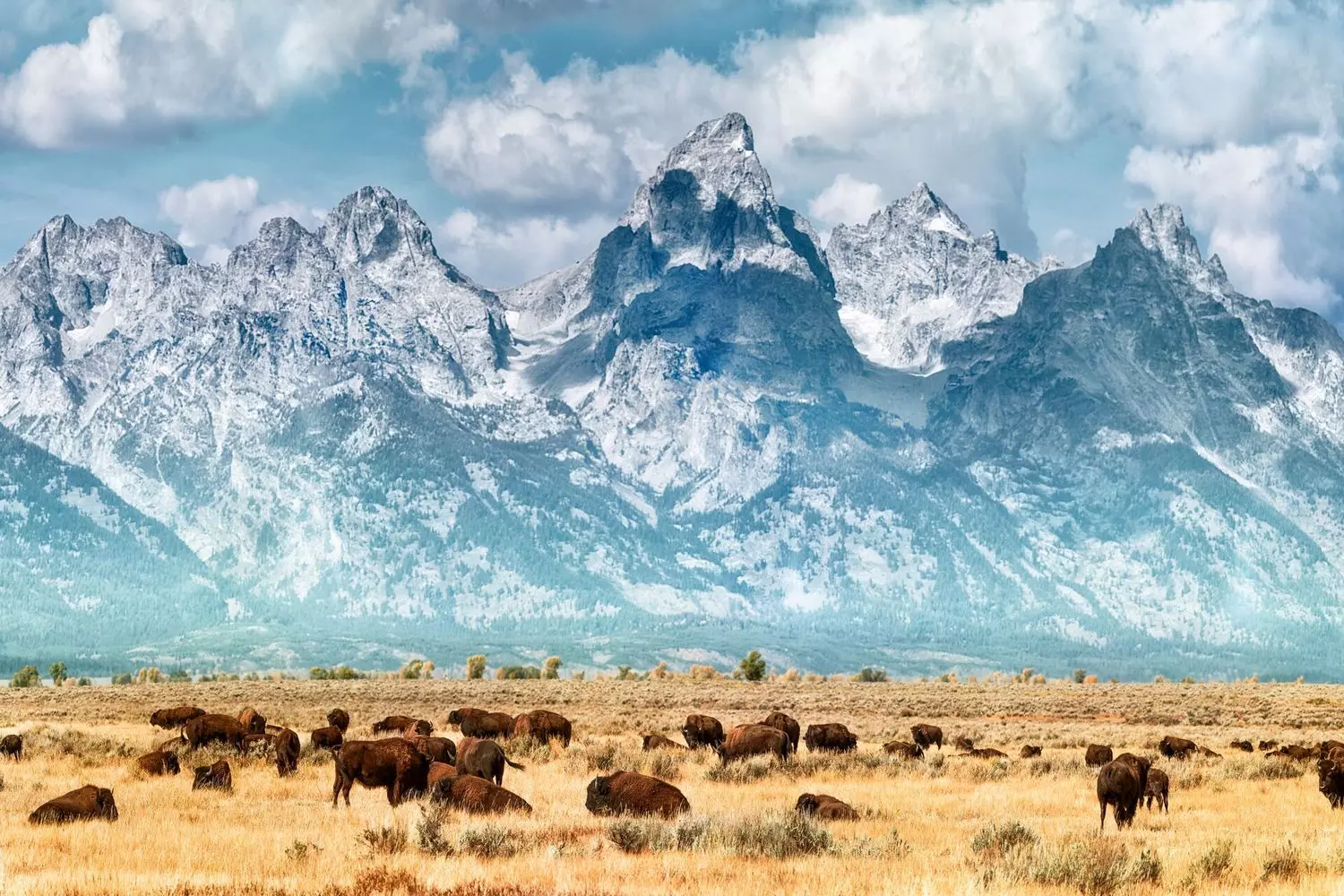
Helpful Tips for Travelers: How to Prepare for the Perfect Vacation in Yellowstone
A trip to Yellowstone is a true adventure and a chance to connect with untouched nature. To make your visit smooth, comfortable, and filled only with positive memories, it’s important to take care of the details in advance. Below are tried-and-true tips to help you avoid surprises and get the most out of your journey.
- 01. Bring Binoculars — A Window Into the Wild
Yellowstone is home to abundant wildlife: bison, bears, wolves, deer, and countless birds. But spotting them up close isn’t always easy. A good pair of binoculars will be your best friend for safe and fascinating wildlife observation.
- Binoculars help you catch subtle animal behaviors from a safe distance.
- Ideal for morning and evening hikes, when animals are most active.
- We recommend lightweight, compact models with 8x or 10x magnification.
- 02. Don’t Forget a Power Bank — Staying Connected Matters
In remote areas of the park, cell signal is unreliable and power outlets are rare. To avoid running out of battery for your phone, camera, or essential apps, a portable charger is a must.
- Be sure to charge your devices each night.
- A power bank will keep your gear running during long hikes and tours.
- Look for one with at least 10,000 mAh capacity to stay powered all day.
- 03. Wear Comfortable Shoes — Your Feet Will Thank You
Yellowstone offers countless trails and varying terrain. Good footwear is essential to prevent fatigue or blisters.
- Choose hiking boots or trail shoes with strong support and cushioning.
- Waterproof or water-resistant shoes are best — the weather can change quickly.
- Break in new shoes before your trip to avoid discomfort on the trails.
- 04. Water and Snacks — Stay Energized on the Go
Shops and cafés are scarce inside the park, and hikes can take hours. Always carry water and a small snack to keep your energy up.
- Bring a reusable water bottle and refill it at designated water stations.
- Ideal snacks include nuts, dried fruit, energy bars, and fresh fruit.
- Avoid perishable foods or anything that may attract wildlife.
Extra Travel Tips
- Dress in layers: Weather in the park can change rapidly — layering lets you adapt quickly.
- Bug repellent: Mosquitoes and ticks are common during the summer months.
- Sunscreen and sunglasses: UV protection is important even on cooler days.
- Maps and navigation: Don’t rely solely on GPS — carry a paper map or download offline maps in advance.
By following these simple tips, you’ll ensure a safer and more comfortable trip, and your journey through Yellowstone will become a truly unforgettable experience. Remember: nature is the best guide, and good preparation is the key to enjoying it fully!
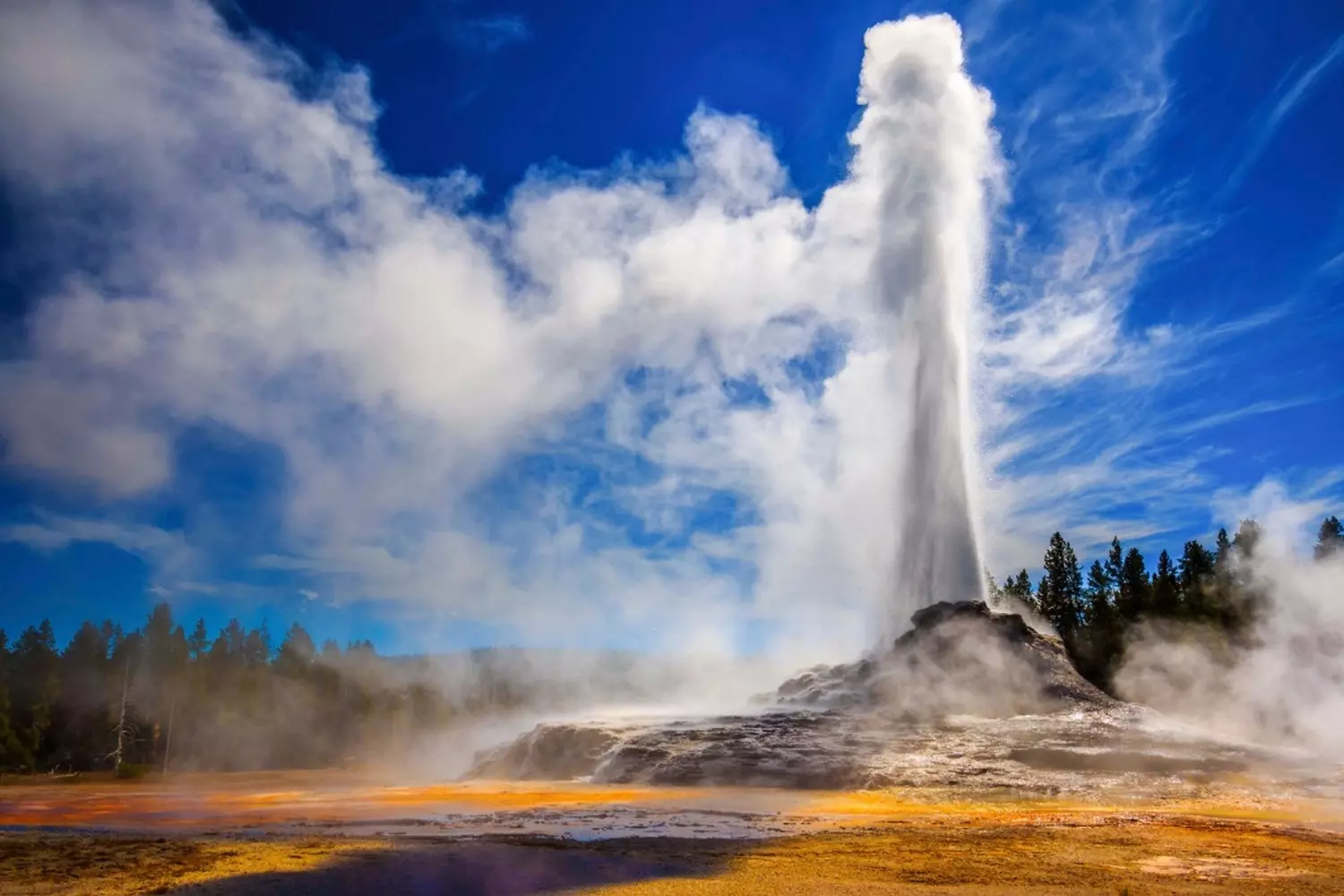
Yellowstone in Culture and Art: Inspiration You Can’t Forget
Yellowstone is more than just a national park with stunning landscapes and unique geology. It’s a place that has inspired artists, writers, filmmakers, and musicians for generations. Its power and beauty have been reflected in countless works of art, becoming a lasting symbol of untamed America and the force of nature. In this section, we explore how Yellowstone has influenced — and continues to influence — global culture, becoming a true legend.
- 01. Yellowstone in Art and Literature — Nature as a Muse
Since the 19th century, when the park was still only an idea, artists have sought to capture its grandeur on canvas. American landscape painters from the Hudson River School viewed Yellowstone as a powerful source of inspiration.
- Thomas Moran, one of the first artists invited on expeditions to the region, created breathtaking landscapes that introduced Yellowstone to audiences across the world. His works helped persuade the U.S. Congress to preserve the area as a national park.
- In literature, Yellowstone is portrayed as a symbol of wild, uncharted nature — a place of awe and reverence. Writers and poets often describe it as land that sings and speaks, where time seems to stand still.
- 02. Cinema: Yellowstone on the Big Screen
Filmmakers have long drawn inspiration from Yellowstone’s dramatic scenery:
- Documentaries by BBC, National Geographic, and Discovery Channel showcase the park’s complex ecosystems and fascinating geology, offering viewers a glimpse into the mysteries of nature.
- In feature films, Yellowstone has served as a backdrop for scenes highlighting the raw power and beauty of the wilderness. The popular TV series "Yellowstone" starring Kevin Costner is named after the park, and many scenes were shot nearby, adding authenticity.
- Hollywood has often used Yellowstone’s panoramas to evoke the spirit of the American West — a symbol of freedom and natural strength.
- 03. Music and Folklore — When Nature Speaks Through Sound
Yellowstone’s influence is also felt in music and folklore:
- Traditional songs of Native American tribes in the region express deep respect for the land and its spirits. Sounds of nature — gurgling hot springs, bird calls — are often woven into both ethnic and contemporary compositions.
- Modern composers and musicians use Yellowstone’s natural rhythms and sounds to create atmospheric music that evokes calm, contemplation, and connection to the Earth.
- 04. Photography — A Dream Destination for Every Photographer
Yellowstone is one of the most photographed natural locations in the world:
- Grand Prismatic Spring, with its surreal rainbow colors, is a crown jewel for photographers and artists. Its image graces magazine covers and global ad campaigns.
- Photos of migrating bison, soaring eagles, erupting geysers, and vibrant sunrises have won international awards and captivated audiences.
- Many photographers return time and again to capture the changing seasons, elusive wildlife, and dramatic natural events.
- 05. Yellowstone as a Symbol — In Pop Culture and Branding
The image of Yellowstone has become a powerful cultural symbol:
- In tourism: logos, souvenirs, and marketing often feature geysers, bison, and canyons to evoke the park’s iconic beauty.
- In environmentalism: Yellowstone stands as a symbol of nature conservation, inspiring campaigns and projects around the world.
- In pop culture: references to the park appear in cartoons, video games, and even fashion — T-shirts and accessories with Yellowstone imagery are consistently popular.
Yellowstone is not just a location on the map — it’s a timeless wellspring of creativity and inspiration. Its landscapes, powerful geysers, and rich biodiversity serve as a vivid reminder of nature’s magnificence. Every work of art inspired by the park carries an unspoken call to protect and respect this extraordinary corner of the Earth.
For those who visit, the experience often becomes more than a memory — it’s a feeling of being part of something greater: life itself.
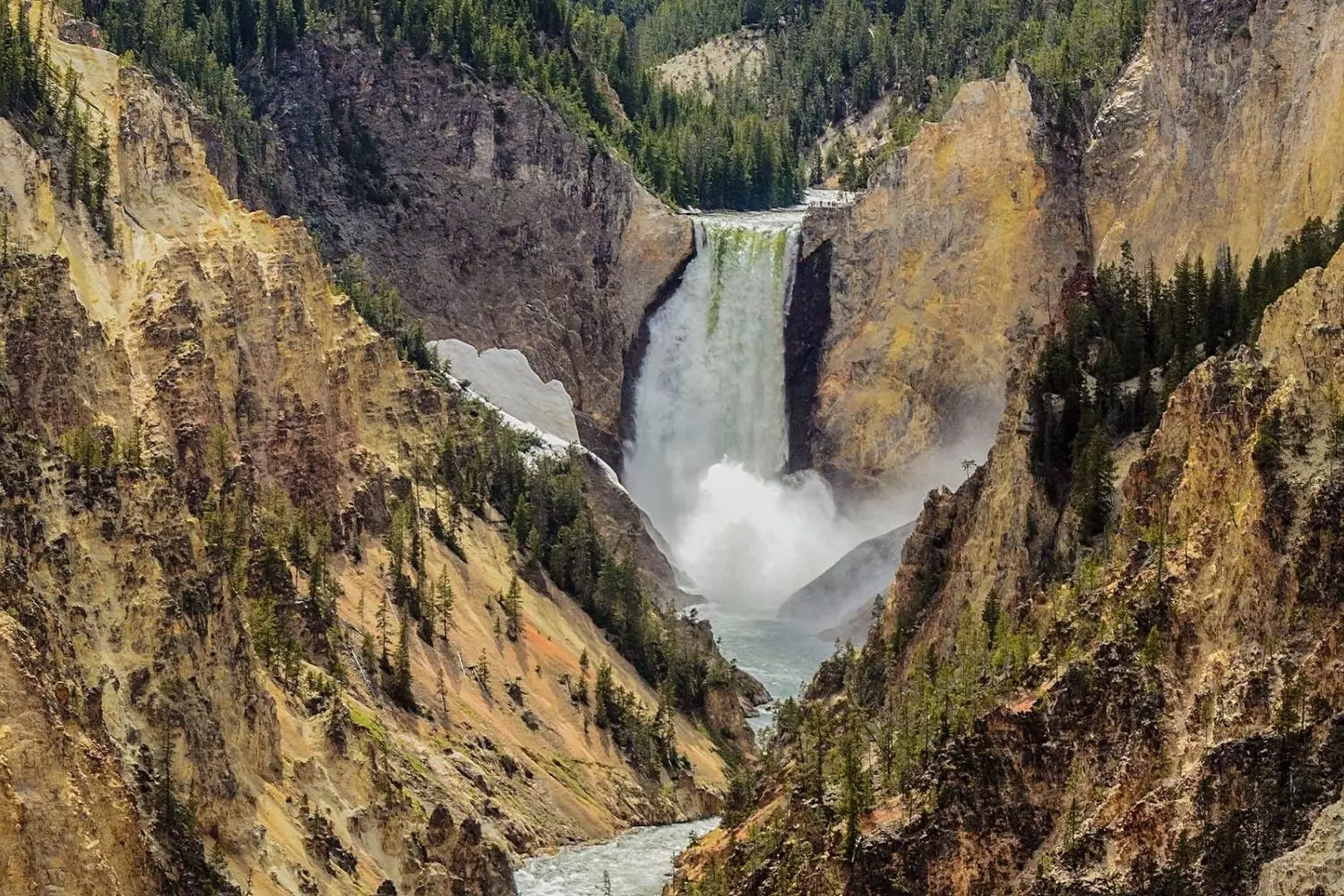
Yellowstone: 20 Incredible Facts About the Park Where the Earth Breathes
Yellowstone National Park is more than just scenic landscapes and crowds of tourists. It’s a place where nature shows its power through geysers, supervolcanoes, and unique ecosystems. Here, bison cause traffic jams, and hot springs change color like chameleons. Want to know more? Here are 20 amazing facts about Yellowstone that will make you see it in a new light.
- 01. Yellowstone bison survived near extinction
In the 19th century, about 60 million bison were wiped out across North America. Fortunately, Yellowstone became a refuge for these animals: today it’s home to the largest wild herd — about 4,000–5,000 individuals. They often cross roads, creating "bison traffic jams." - 02. Hot springs can be deadly
The temperature of some hydrothermal features reaches 138°C. At least 20 people have died in the park's history after falling into boiling springs. The most tragic case was a tourist who tried to bathe in a hot lake. - 03. Wolves had to be reintroduced
In 1926, the last wolf pack in Yellowstone was exterminated. It wasn’t until 1995 that 41 wolves were reintroduced to restore the ecosystem. It worked: populations of grizzly bears and mountain lions also increased. - 04. You can see the Northern Lights here
Yes, the aurora borealis can appear in Yellowstone — though only 1–2 times a year. But from April to October, the Milky Way is clearly visible above the park thanks to the lack of light pollution. - 05. A U.S. president once worked as a park ranger
In the summer of 1936, future president Gerald Ford worked in Yellowstone as a ranger. In 1976, he returned — this time as President — to draw attention to national parks. - 06. "Morning Glory" Spring is changing color because of tourists
The bright-blue hot spring Morning Glory Pool is gradually turning green. For decades, tourists threw coins, socks, and even chairs into it, clogging the bottom and lowering the water temperature. Now microorganisms thrive there, turning the water yellow and orange. - 07. Yellowstone has its own "Bermuda Triangle"
In the western part of the park, people mysteriously vanish. The most famous case occurred in 1870, when an expedition of 30 people entered the Firehole River valley and never returned. No bodies or gear were found. Locals link the phenomenon to geothermal activity and hydrogen sulfide emissions. - 08. "Steamboat" geyser shoots higher than the Statue of Liberty
The world’s tallest active geyser — Steamboat Geyser — ejects boiling water up to 90–120 meters (for comparison: the Statue of Liberty is 93 m tall). But its eruptions are unpredictable: intervals vary from 3 days to 50 years. - 09. "Zombie trees" grow here
After wildfires, some pine trees remain standing for decades, neither falling nor decaying. This happens because thermal waters saturate them with minerals, turning them into "stone pillars." Scientists call them "skeletal forests." - 10. The park has its own "Great Wall"
Obsidian Cliff is a 50-meter wall of black volcanic glass. Native Americans used it to make weapons, and today’s tourists find arrowheads here that are over 10,000 years old. - 11. Yellowstone’s supervolcano "sings"
Scientists have recorded a low-frequency hum (4–5 Hz) coming from the caldera. The sound is so strong that it can be detected 1,600 km away. The cause remains unknown — possibly moving magma or resonating underground cavities. - 12. "Invisible" fish live in the park
The endemic Yellowstone cutthroat trout has unique camouflage: its scales reflect light like a mirror, making it nearly invisible underwater. Fishing it is prohibited — the species is protected. - 13. "Independence Day" was filmed here
The famous scene in which aliens blow up the White House was actually filmed in Yellowstone. The real landscape of the Hayden Valley — with its thermal fields — resembled the "aftermath of an attack." - 14. The park has a "Devil’s Well"
"Devil’s Well" is a vertical cave with an underground lake. If you drop a stone in, the sound of it hitting the water takes 14 seconds. The water level is 60 meters down — but the bottom has never been found. - 15. "Floating island" on Yellowstone Lake
A rare phenomenon occurs on the lake — a drifting island of hot springs. It’s a floating mass of mineral deposits the size of a football field, slowly moving across the water. - 16. Stone waves
At Mammoth Hot Springs, there are terraces that grow up to 2 cm a day. In a year, they can completely change shape, creating the effect of "frozen stone waves." - 17. Fire rainbow
A rare atmospheric phenomenon can be seen in Yellowstone during winter. Sunlight refracted through ice crystals above thermal springs creates a rainbow of fiery colors. - 18. A lake with two water layers
Yellowstone Lake has a clear boundary between warm and cold water layers. In summer, the temperature difference can reach 20°C within just 3 meters of depth. - 19. Ice flowers
In winter, beautiful ice structures resembling crystal flowers form on the surface of hot springs. They can reach up to a meter in diameter. - 20. Volcanic lightning
During geyser eruptions, miniature storms sometimes occur, with lightning bolts up to 100 meters long. This is an extremely rare natural phenomenon.
Yellowstone isn’t just a park — it’s a living natural laboratory, where every fact sounds like a plot for an adventure movie. From the supervolcano to the "bison jams" — there’s always something to amaze you. It’s a place where science meets mystery, and legends turn out to be real. One question remains — what secrets has the park yet to reveal?
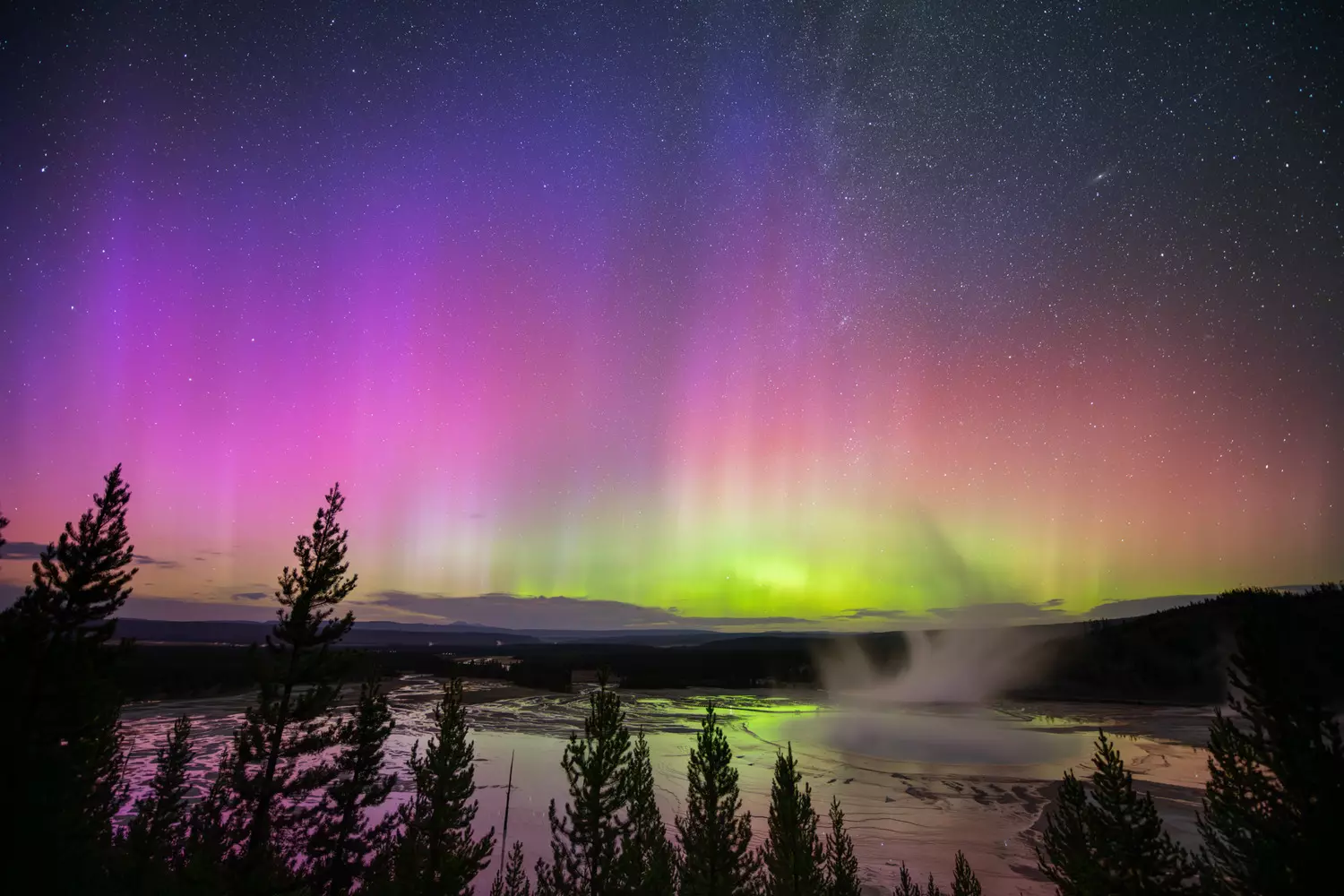
American Butler — your guide to the America you’ve yet to discover
There are places where you feel part of something greater. Yellowstone is exactly that. No filters work here. Likes don't matter here. What matters are the moments — when you stand in front of a bubbling spring and the ground beneath your feet lives its own life.
Want to escape to a place with fewer words and more feelings? Start with Yellowstone. And to make your journey comfortable, thoughtful, and unforgettable, trust American Butler to organize it. We don’t just show you the park — we create a journey that fits you:
- A personalized itinerary tailored to your interests;
- A professional guide who knows not only the landmarks but also the hidden gems;
- Assistance with booking accommodations and managing logistics;
- Comfortable transfers and full support;
- The option to add other parks to your route — Bryce Canyon, Yosemite, Arches.














